It’s hard to discuss music in general, without mentioning the electric guitar. Arguably the most revolutionary instrument to ever be invented, it has been used to create some of the most beautiful pieces of music imaginable.
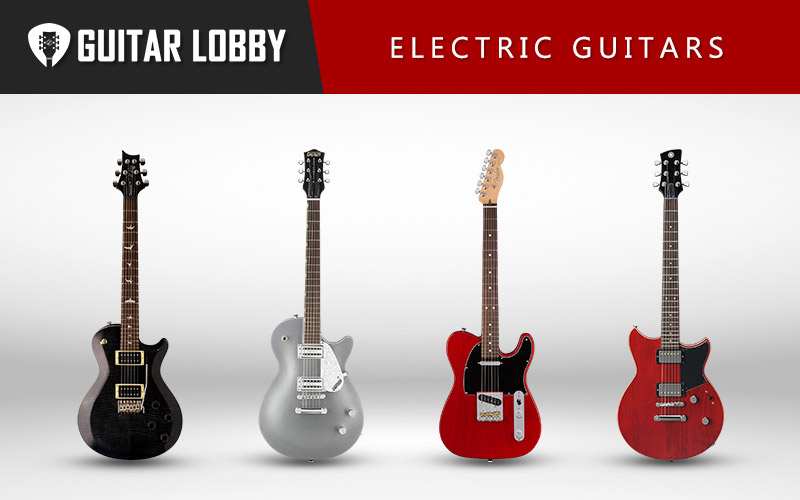
In addition to its beauty, the standout quality of the electric guitar is its versatility. It can be turned into anything that you can sonically imagine, from clean and melodic sounding to a burning inferno of distorted noise. With so many electric guitars out there, it can be a difficult task trying to determine which is best suited to your style. There’s so much variation from model to model that it can quickly become overwhelming.
We’ll begin this article by discussing the best electric guitars at each price point. For those of you who want to learn more about electric guitars before reading reviews, we put together a buying guide at the bottom of the page.
| Name of Product | Image of Product | Description | Price Range | Full Review |
|---|---|---|---|---|
| 1. Fender Professional American Telecaster (Best Under $1500) | 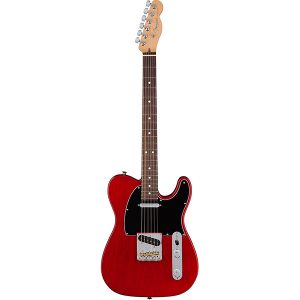 | Body Wood: Alder Pickups: V-Mod Single Coil | $1500 | Read Full Review Below |
| 2. Fender Player Stratocaster (Best Under $1000) | 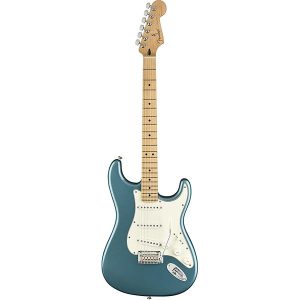 | Body Wood: Alder Pickups: Alnico 5 Single-Coil | $830 | Read Full Review Below |
| 3. Yamaha RevStar RS420 (Best Under $500) | 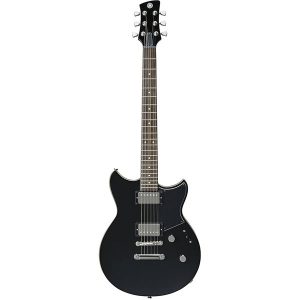 | Body Wood: Maple/Nato Pickups: Alnico Humbucking | $500 | Read Full Review Below |
| 4. Gretsch G5425 Electromatic Jet Club | 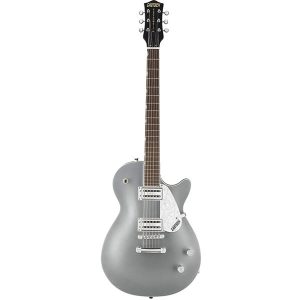 | Body Wood: Basswood/Mahogany Pickups: Gretsch Dual-Coil Humbucking | $350 | Read Full Review Below |
| 5. PRS SE Mark Tremonti | 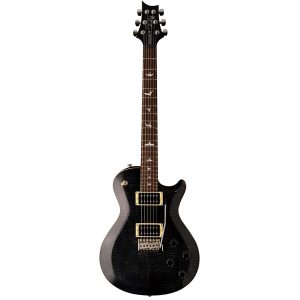 | Body Wood: Mahogany Pickups: Dual Humbuckers | $800 | Read Full Review Below |
| 6. Gibson Les Paul Standard (Editor's Choice) | 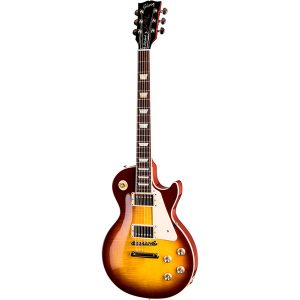 | Body Wood: Mahogany | $2500 | Read Full Review Below |
| 7. Fender Deluxe Nashville Telecaster | 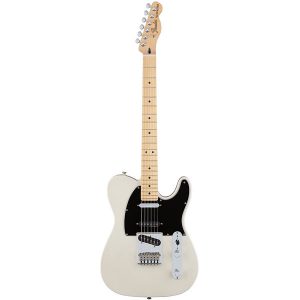 | Body Wood: Alder Pickups: Vintage Noiseless Single-Coil | $830 | Read Full Review Below |
| 8. Gibson SG Standard | 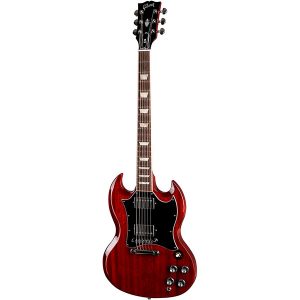 | Body Wood: Mahogany Pickups: 650R & 700T Humbuckers | $1500 | Read Full Review Below |
| 9. Fender Player Jazzmaster | 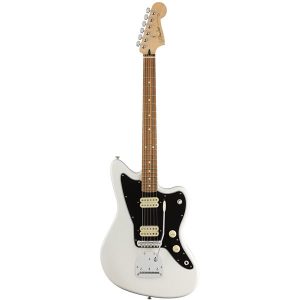 | Body Wood: Alder Pickups: Alnico II Humbuckers | $700 | Read Full Review Below |
| 10. Squire Classic Vibe ‘70s Jaguar | 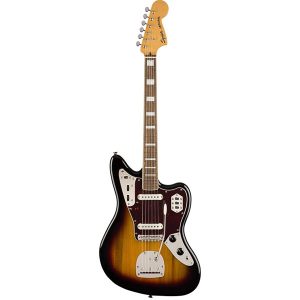 | Body Wood: Poplar Pickups: Alnico Single-Coils | $450 | Read Full Review Below |
| 11. Yamaha Pacifica Series 012 | 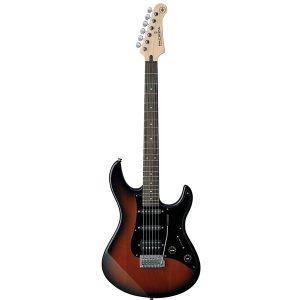 | Body Wood: Agathis Pickups: Dual Single-Coils, Single Humbucker | $200 | Read Full Review Below |
| 12. ESP LTD EC-256FM | 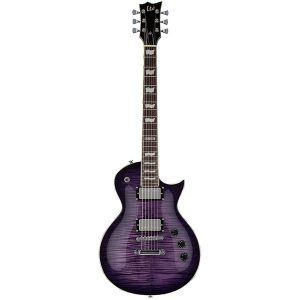 | Body Wood: Mahogany Pickups: LH-150N Humbuckers | $450 | Read Full Review Below |
| 13. Schecter C-6 Deluxe | 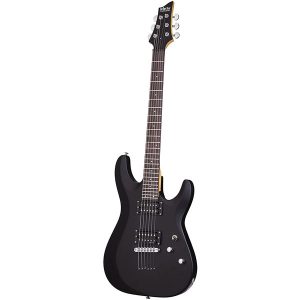 | Body Wood: Basswood Pickups: Diamond Plus Humbuckers | $300 | Read Full Review Below |
| 14. Ibanez Artcore AF55 | 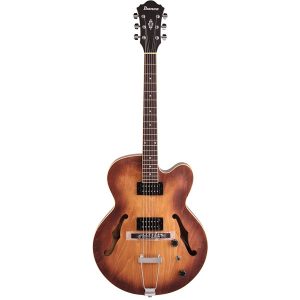 | Body Wood: Rosewood Pickups: Dual-Humbuckers | $330 | Read Full Review Below |
| 15. Squier Classic Vibe ‘70s Stratocaster | 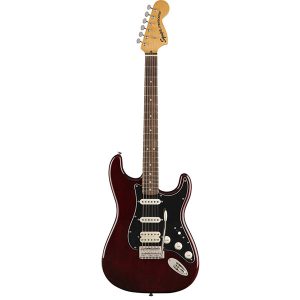 | Body Wood: Poplar Pickups: Fender Alnico Single-Coil | $400 | Read Full Review Below |
| 16. Epiphone Les Paul Special II | 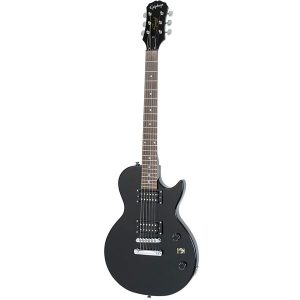 | Body Wood: Alder/ Mahogany Pickups: Humbucker | $200 | Read Full Review Below |
| 17. Fender Kurt Cobain Jaguar | 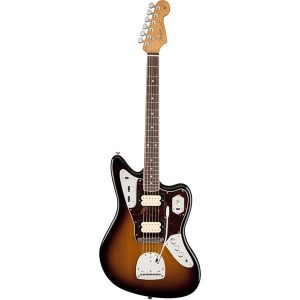 | Body Wood: Alder Pickups: DiMarzio DP100 Humbuckers | $1240 | Read Full Review Below |
| 18. Sterling by MusicMan AX3S | 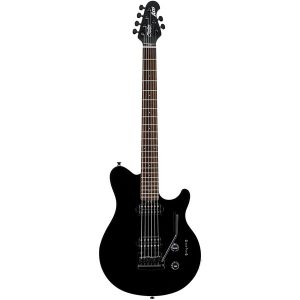 | Body Wood: Linden Pickups: Dual Humbuckers | $400 | Read Full Review Below |
| 19. ESP LTD Deluxe EC-1000 VB | 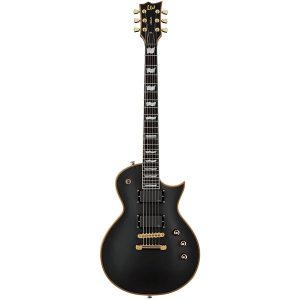 | Body Wood: Mahogany Pickups: EMG 60 & EMG 81 Humbuckers | $1000 | Read Full Review Below |
| 20. Epiphone Limited Edition ES-335 Pro | 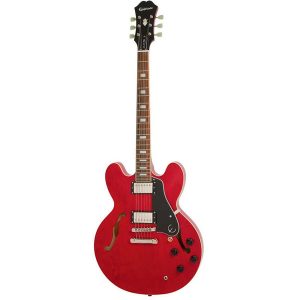 | Body Wood: Maple Pickups: Alnico Pro Humbuckers | $700 | Read Full Review Below |
| 21. Squier Classic Vibe ‘70s Telecaster | 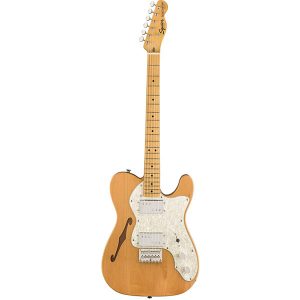 | Body Wood: Poplar Pickups: Fender Wide Range Humbuckers | $450 | Read Full Review Below |
| 22. Gretsch G5420T | 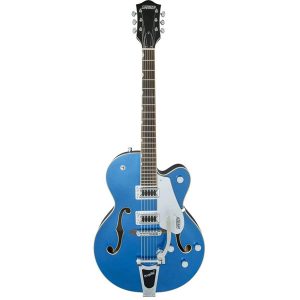 | Body Wood: Maple Pickups: Black Top Filter ’Tron Humbuckers | $800 | Read Full Review Below |
| 23. Epiphone Les Paul Custom Classic Pro | 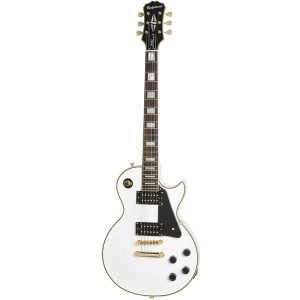 | Body Wood: Mahogany Pickups: Gibson YSA Open-Coils | $680 | Read Full Review Below |
| 24. Fender Player Telecaster HH | 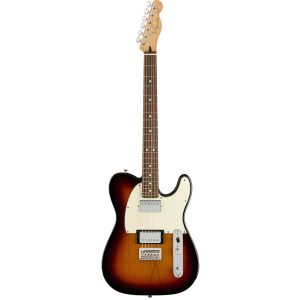 | Body Wood: Alder Pickups:Fender Humbuckers | $730 | Read Full Review Below |
| 25. Ibanez Artcore AG75BS | 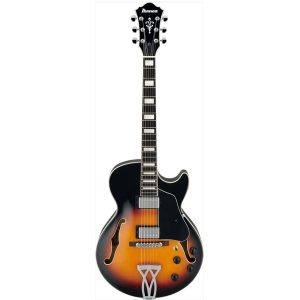 | Body Wood: Maple Pickups: Ibanez Humbuckers | $400 | Read Full Review Below |
Here Are the Best Electric Guitars (All Price Ranges)
1. Fender Professional American Telecaster (Best Under $1500)
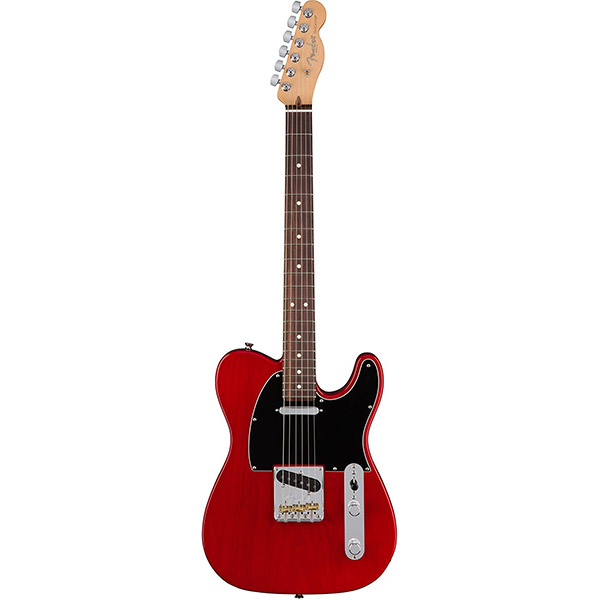
| Estimated Price | $1500 |
| Body Wood | Alder |
| Finish | Gloss Polyurethane |
| Neck | Maple |
| Neck Shape | Modern “Deep C” |
| Fingerboard | Rosewood |
| Fret Count | 22 |
| Pickups | V-Mod Single Coil |
My Review: The Telecaster “twang” is one of the most recognizable tones in music. Used across multiple styles over countless decades, this superb only gets better with time. Thanks to their long history of experience producing the Tele, Fender has perfected its comfort and playability and refined the qualities in the Professional American model.
The classic single-cutaway body type of the original Telecaster models is still present, but brand-new V-Mod single-coil pickups add an air of freshness to its tone. These pickups are specifically voiced for each position, so you can tailor the output by selecting the bridge, middle, or neck.
One of the undeniable qualities of this American Telecaster is its compatibility with effects pedals. There’s something about the Tele tone that lends itself perfectly to most effects, and for that reason, it’s a rarity amongst electric guitars. Whether you want to drape your tone in heavy distortion, bathe it in reverb or go psychedelic by adding modulation, the Professional American Telecaster will suffice.
Build Materials: The Professional American Telecaster has been constructed using only the finest materials. Fender’s motto reads something like, “if it ain’t broke, don’t fix it”. For that reason, they’ve stuck with the usual alder body and back, combined with an articulate rosewood fingerboard and a luscious maple neck.
Hardware, Electronics, and Controls: As I previously mentioned, Fender decided to change things up regarding the choice of pickups on the Professional Telecaster. The chosen single-coils enhance the classic Tele twang and sound great in all three positions. There’s also a singular tone pot and master volume pot, and the signature 6-in-a-row tuning pegs.
Bottom Line: The Fender American Professional Telecaster may come with a fairly hefty price tag, but as soon as you get your hands on it, it’s hard to deny that it’s justified. Built around the traditional attributes and aspects of the original models, this modern-vintage hybrid plays like a dream. Not to mention, it’s got a brand new pair of single-coil pickups that arguably make it sound better than ever! If you prefer the Stratocaster model by Fender, it is available in the Fender American Professional Stratocaster is also available here.
2. Fender Player Stratocaster (Best Under $1000)
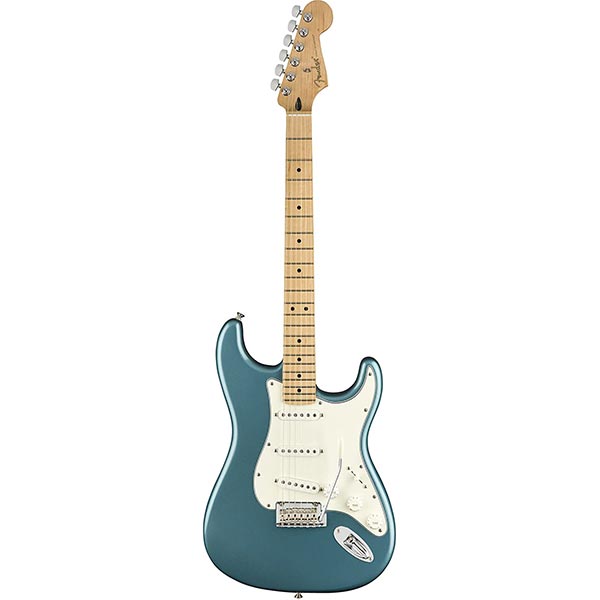
| Estimated Price | $700 |
| Body Wood | Alder |
| Finish | Gloss Polyester |
| Neck | Maple |
| Neck Shape | Modern “C” |
| Fingerboard | Maple |
| Fret Count | 22 |
| Pickups | Alnico 5 Single-Coil |
My Review: Since it was first introduced back in 1954, the Fender Stratocaster has remained one of the most sought-after instruments on the planet. A legendary solid-body, the Strat has been used by the most innovative and revered guitarists for the past sixty-plus years. Known for its versatility, classic warm tone, and exceptional playability, this electric guitar is a joy to behold.
Over the years, there have been multiple variations of the Strat. Fender has always stayed true to the original fundamental qualities, tweaking the finer details along the way. With the Player series model, they have retained the best-loved aspects of the vintage Stratocasters and added some modern improvements.
When designing the Player Series Strat, Fender tweaked the body shape slightly to make it more resembling of the beloved vintage models. They also touched up the appearance with retro finishes and added a classic logo for authenticity.
The result is an extremely playable Stratocaster that feels and looks the part. It’s capable of producing both the quacking tone that the guitar is famous for in addition to the smooth glassy tone that sounds so great for rhythm guitar. As you’d expect from a Fender guitar, the Player Series Stratocaster is built using only the highest quality components.
Build Materials: The Player Stratocaster features a smooth-playing maple neck, shaped as a C-profile. The neck is then glossed with a satin polyurethane finish, as is the contoured alder body. Additionally, there’s the fast maple fingerboard, inlaid with dots.
Hardware, Electronics, and Controls: In terms of controls, the Player Strat offers the classic 5-position blade switch for tailoring the tonal output. The pickups installed are a trio of Fender-designed single-coils, specifically built for the classic Stratocaster sound. There’s a pair of tone pots and a master volume, along with a whammy bar for shredding out solos.
Bottom Line: The Fender Stratocaster requires no introduction. Arguably the most iconic solid-body guitar to ever be produced, it continues to go from strength to strength over six decades since its origination. The Player Series edition pays its respects to the much-loved vintage models of yesteryear, while also including some subtle adjustments to keep the guitar on the ascendance. Just like the American Professional Series, if you like the quality and price point of the Fender player series, a Fender Player Telecaster is also available here. Overall, I would say that this is the best electric guitar under 1000 dollars.
Popular Related Article: Our Favorite Electric Guitars Under $1000
3. Yamaha RevStar RS420 (Best Under $500)
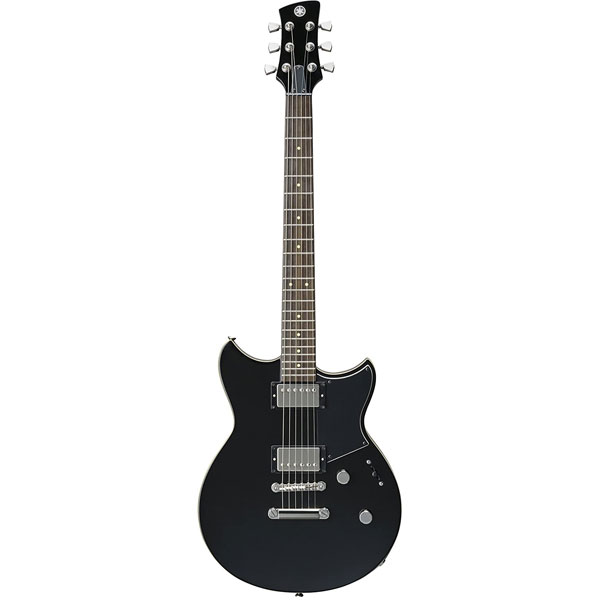
| Estimated Price | $500 |
| Body Wood | Maple/Nato |
| Finish | Gloss |
| Neck | Nato |
| Neck Shape | Slim |
| Fingerboard | Rosewood |
| Fret Count | 24 |
| Pickups | Alnico Humbucking |
My Review: The RevStar RS420 is one of Yamaha’s best electric guitars, with its unique tone and comfortable playability. Catering for fast, technical players, the RS420 has been designed to promote nifty transitions around the fretboard and help to prevent hand fatigue from setting in.
With an especially slim neck profile, moving up and down the fretboard of this Yamaha guitar is very easy indeed. The frets themselves are medium-sized, and perfect for quickly switching between intricate chord shapes or inversions.
One common criticism of Yamaha’s electric guitars is that they tend to sound a little too bright, but that’s not the case with the RevStar RS420. Its alnico humbucking pickups produce a vast selection of color tones, from dull and understated to snappy and precise.
Build Materials: When constructing the Revstar RS420, Yamaha decided to use nato for the neck. One of the more uncommon woods, this material adds a unique feel to the guitar. Then there’s the maple/nato body, which is solid but fairly lightweight. Finally, the fingerboard employs the classic choice of rosewood.
Hardware, Electronics, and Controls: The color of the hardware on the Yamaha Revstar RS420 is nickel, which adds to the sleek and minimalistic overall appearance. Alnico humbucking pickups are used to keep the sound warm, powerful and with no noise issues like some single-coils are prone to producing.
Bottom Line: The Revstar RS420 is a wonderful solid-body electric guitar. Yamaha has used all of their decades of expertise to craft this instrument. The choice of nato for the neck and body gives a truly unique feel compared to other solid-body offerings. In terms of tone, the classic Yamaha brightness is still present, but in a more controlled way, making the guitar suitable for heavy playing or more melodic styles.
Popular Related Article: Our Favorite Beginner Electric Guitars
4. Gretsch G5425 Electromatic Jet Club
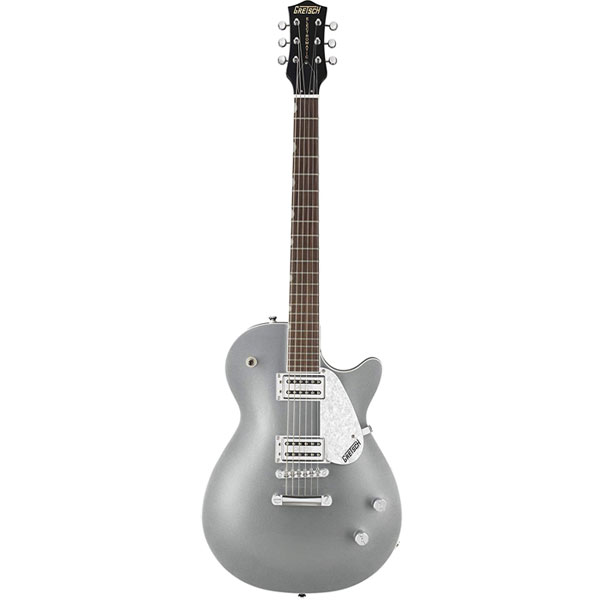
| Estimated Price | $350 |
| Body Wood | Basswood/Mahogany |
| Finish | Gloss Urethane Finish |
| Neck | Maple |
| Neck Shape | Bolt-On |
| Fingerboard | Rosewood |
| Fret Count | 22 |
| Pickups | Gretsch Dual-Coil Humbucking |
My Review: Affordable, sleek, and filled with character, the G5425 is a brilliant addition to Gretsch’s Electromatic Jet Club. Providing unrivaled value for money, this electric guitar feels solid and robust. The arched maple top produces a bright, crisp tone to go with the elegant aesthetics.
The Electromatic range is proof that you don’t always need to spend a small fortune to get a top-tier electric guitar. If you’re familiar with Gretsch guitars, you’ll know that they are most famous for their hollow-body models. Although the G5425 doesn’t fall directly into that category, its chambered body does produce a very similar sound to those highly-respected models.
Resonant and expressive, this Jet Club guitar is equally suited to rhythm and lead playing. The dual-humbucker pickups sound thick and immersive and excel when combined with the natural overdrive of a tube amp pushed to its limits. There’s also the anchored Adjusto-Matic bridge which ensures the intonation doesn’t waver, no matter how hard you play.
Build Materials: With a two-tone body color scheme made from basswood and stained with walnut on the back and sides, the G5425 has the appearance of a guitar you’d expect to be significantly more expensive. The rosewood fingerboard and synthetic bone nut add more elegance to the appearance, while the maple, gloss-finished neck makes fast chord changes a breeze.
Hardware, Electronics, and Controls: The dual-coil humbucking pickups are largely responsible for the fat tone of the G5425. Designed and manufactured by Gretsch, they were chosen for their ability to beef up the overall tone of the guitar. There’s a three-way pickup selector for further sculpting your tone, and the chrome hardware blends nicely with the overall color scheme.
Bottom Line: If you’re looking for a high-quality electric guitar at an affordable price, there are few better options than this Gretsch solid-body. Combining a classy appearance with durable construction, it’s a great choice for guitarists of all styles. The thick, full-bodied tone resembles Gretsch’s hollow-body offerings, with a little more clarity and definition in the high-mids.
5. PRS SE Mark Tremonti
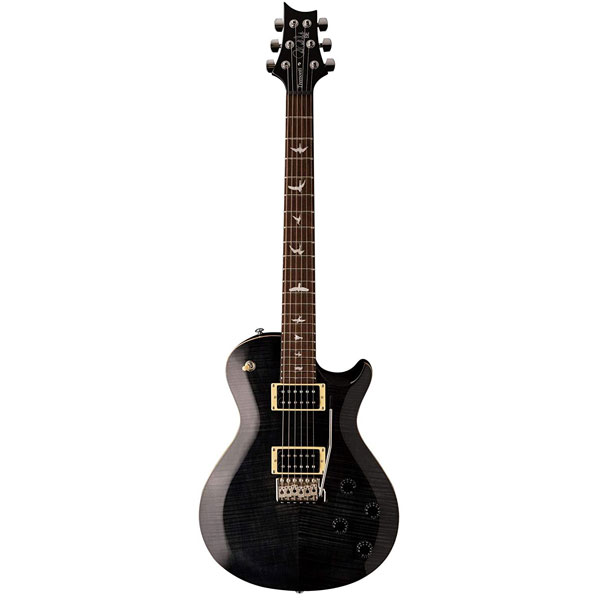
| Estimated Price | $800 |
| Body Wood | Mahogany |
| Finish | Gloss |
| Neck | Maple |
| Neck Shape | Single Cut |
| Fret Count | 22 |
| Pickups | Dual Humbuckers |
My Review: Known for his powerful style of guitar playing, most famously in the post-grunge band Creed, Mark Tremonti teamed up with PRS to create this multi-faceted SE solidbody. Sonically versatile, the guitar lends itself to heavier styles of rock like metal but also has the smoothness required to play more melodic styles.
Designed with performance in mind, this PRS guitar features an interesting single-cut design for extra mobility. The Tremonti headstock logo adds a unique touch to the guitar’s appearance, and with the classic PRS bird inlays, there’s no shortage of authenticity with the Tremonti collaboration model.
The inclusion of a classic tremolo-style bridge furthers the playability and comfort of the guitar. It also feels durable, but not overly heavy, catering for energetic performances. PRS guitars are known to be reliable both in terms of the tones they produce and the longevity they boast. The SE Mark Tremonti signature solidifies that notion.
Build Materials: The neck of this PRS SE guitar is made from mahogany, while its fretboard utilizes the popular material, rosewood. The hardware is colored chrome, adding to the understated design of the guitar. Mahogany makes up the single-cut body for a solid, durable piece.
Hardware, Electronics, and Controls: Unsurprisingly, Mark Tremonti’s own signature S pickups are installed on the guitar. These humbuckers extract every ounce of resonance and character out of the tonewood mixture. There’s also the inclusion of black speed knobs for tweaking the tone and volume of the guitar.
Bottom Line: PRS and Mark Tremonti combine to create a killer guitar that is brimming with attitude. Ideal for heavy riffs, crunching chords, or smooth melodic treble leads, this signature model is versatile. It also looks the part, with the moody black aesthetics being complemented by the nickel hardware. With a large 25″ scale length, there’s plenty of room for technical shredding!
6. Gibson Les Paul Standard (Editor’s Choice)
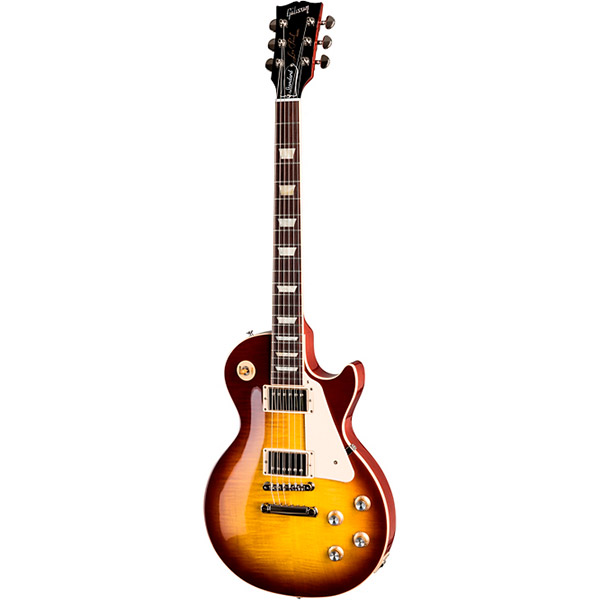
| Estimated Price | $2,500 |
| Body Wood | Mahogany |
| Finish | Gloss Nitrocellulose |
| Neck | Mahogany |
| Neck Shape | 50s rounded |
| Fingerboard | Rosewood |
| Fret Count | 22 |
| Pickups | BurstBucker 61R and BrustBucker 61T Humbuckers |
My Review: The Gibson Les Paul Standard is without a doubt one of the most iconic rock and roll guitars of all time. A hugely popular electric guitar, blending pristine clean tones and classic-sounding crunch, this solid-body recreates the celebrated ’60s models that have graced some of the finest recordings in rock music history.
Les Paul’s are renowned for their power output, and unique expressiveness. Well suited to a wide range of genres, the Standard model can hold its own in heavier songs or more melodic pieces. Boasting an impeccably wide sonic range, it’s easy to hear why Gibson’s flagship electric guitar continues to be at the forefront of live and recorded music to this day.
To bring the classic Les Paul into the modern era, Gibson has significantly reduced the weight of the body. Over a pound lighter than previous models, the Studio boasts improved comfort and allows you to play for long sessions without becoming fatigued.
Build Materials: Historically, Gibson has used several materials to construct their various Les Paul editions. The Standard model has a 50s rounded mahogany neck. The body is made from gloss nitro finished mahogany, with an incredible AA figured Maple top. The rosewood fingerboard adds a refined and distinguished touch to this beautiful electric guitar.
Hardware, Electronics, and Controls: A pair of BurstBucker humbucker pickups provide that classic Les Paul crunch. In the neck position, Gibson has opted for a 61R, while the bridge has a 61T. This combination creates a versatile blend of smooth clean tones and growling thickness. Fitted on the body are two volume controls, two tone controls, and a three-way toggle pickup selector.
Bottom Line: Gibson Les Paul’s are exquisite solid-body electric guitars and the Standard model exemplifies this. With high-quality components, smooth playability, and an array of tonal options, this guitar makes a perfect companion for musicians who want a classic tone to use as a blank canvas that can be built upon in their unique way.
7. Fender Deluxe Nashville Telecaster
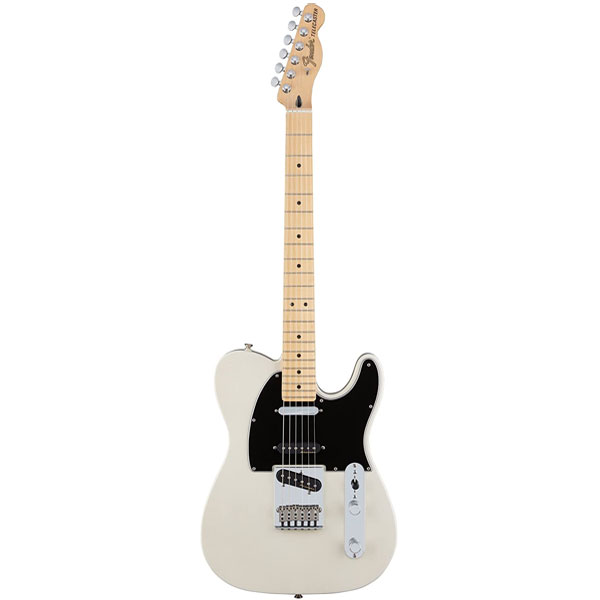
| Estimated Price | $830 |
| Body Wood | Alder |
| Finish | Gloss Polyester |
| Neck | Maple |
| Neck Shape | Modern “C” |
| Fingerboard | Maple |
| Fret Count | 22 |
| Pickups | Vintage Noiseless Single-Coil |
My Review: To round off our list of the 25 best guitars on the market today, we have the magnificent Deluxe Nashville Telecaster by Fender. Tailored for the country, bluegrass, and folk-rock, this edition of the much-loved Tele is unique in design and tone.
With a pair of vintage noiseless Tele pickups positioned in the neck and bridge and a vintage noiseless Strat pickup in the middle position, the guitar can produce a selection of tones that make it stand out amongst the crowd.
The contoured neck heel and locking tuning machines provide the classic Telecaster durability while retaining the mobility that makes it a perfect choice for energetic guitar performances. Whether you are playing through a tube amp stack or recording straight into your interface, the Nashville Tele will provide you with gorgeous tones to color your songs.
Build Materials: The body of the Fender Deluxe Nashville Telecaster is made from Alder and shaped traditionally. It’s finished in gloss polyester. The neck features a modern C design and is constructed from maple, with black Pearloid dots. Then there’s the satin urethane neck finish that makes it even smoother to play.
Hardware, Electronics, and Controls: Concerning hardware, Fender has utilized a 6-saddle string-through-body design. They’ve opted for a deluxe cast tuning machine for added stability. The neck plate is asymmetrical with 4-bolts, and the pickups used are Fender-designed single coils, with a Strat pickup in the middle. There’s a 5-position switcher blade, and of course, the traditional master volume and tone controls.
Bottom Line: The Deluxe Nashville Tele is different from its same-name counterparts. Made especially for jangly, country-styled guitar, it offers a unique blend of comfortable playability and smooth tones. As you’d expect from an authentic Fender Tele, all of the hardware and tonewoods have been chosen to specifically enhance the sound and feel of this prestigious electric solid-body guitar.
8. Gibson SG Standard
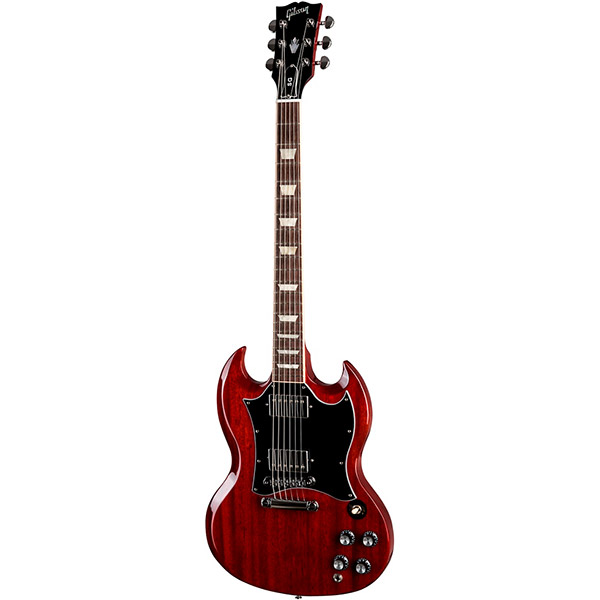
| Estimated Price | $1,500 |
| Body Wood | Mahaogany |
| Finish | Gloss Nitro |
| Neck | Mahogany |
| Neck Shape | Set |
| Fingerboard | Rosewood |
| Fret Count | 22 |
| Pickups | 650R & 700T Humbuckers |
My Review: Another of Gibson’s world-renowned original designs, the Gibson SG is a total rock and roll machine. With a solid mahogany body and neck combination coated in a gloss nitro finish, the SG has stunning classic good looks. There’s the sixties-style SlimTaper neck that plays exceptionally fast and is bound to bring out the best in your flashy solos.
Medium jumbo frets have been chosen to bridge the gap between lead and rhythm playing. The overall sound is a blend of the classic crunch and some new-found smoothness in the treble end. You’ll be pleased to know, like all SG’s, this guitar has a high output and sounds huge.
Build Materials: The body of the Gibson SG Classic is made from mahogany. Rosewood was chosen for the fingerboard so that you can navigate your way around the 22 frets with ease. The nut material is Graph Tech, a classy and practical addition.
Hardware, Electronics, and Controls: Both the bridge and neck pickups on the SG are high-output humbuckers, Dual Gibson 490 61 humbuckers. Chrome finish hardware with a Tune-o-Matic bridge and a Stopbar tailpiece and a 3-way toggle switch paired with 2 tone pots and 2 volume pots.
Bottom Line: In terms of quality, there are very few guitars that can compete with an original Gibson SG. Unline the Les Paul which is traditionally a 3 piece body with an archtop, the SG is a slab guitar that significantly reduces manufacturing cost, and as a result, the SG retails for significantly less. $1500 for a full blow, USA made, Gibson electric guitar is a pretty incredible value. This is easily one of the best electric guitars out there.
9. Fender Player Jazzmaster
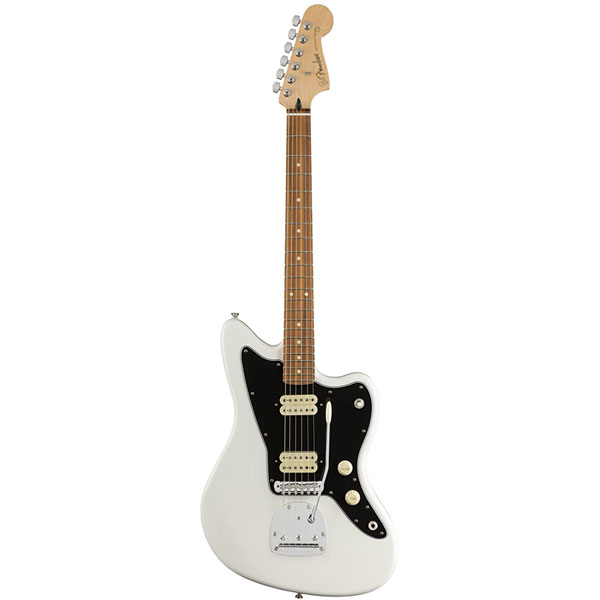
| Estimated Price | $700 |
| Body Wood | Alder |
| Finish | Gloss |
| Neck | Maple |
| Neck Shape | Modern “C” |
| Fingerboard | Pau Ferro |
| Fret Count | 22 |
| Pickups | Alnico II Humbuckers |
My Review: Another exemplary offering from legendary guitar manufacturers Fender, the Jazzmaster boasts a rich history of smooth chord progressions and warm licks. Originally designed specifically for jazz and blues guitarists, the Jazzmaster has crossed over into many other styles over the years.
The Player series was brought into existence to replace Fender’s Mexican standard range. Similarly, it provides guitarists with a more affordable way to experience the classic Fender models, without compromising on quality.
The choice of tonewoods evokes warmth from the Player Jazz across the fretboard. It produces a refined, melodic tone that sounds incredible in the mid-range frequencies. Combined with a touch of overdrive, the Jazzmaster blends the worlds of rhythm and lead guitar effortlessly.
Build Materials: Fender ensured that they used high-quality materials when constructing their player series. The Jazzmaster has an alder body, a staple of the manufacturer’s solid-body offerings. Resonance is enhanced by maple and Pau Ferro combination used for the neck and fingerboard. The satin finish adds a glossy touch to the instrument.
Hardware, Electronics, and Controls: Alnico II humbuckers are the pickups of choice on the Player Series Jazzmaster. These pickups are known for the focus they provide in the mid-high frequencies, extracting all of the warmth required for clean licks, smooth transitions, and full-bodied chords.
Bottom Line: Electric guitars don’t get much better than the Fender Jazzmaster. Somewhat of a musical chameleon, the Jazz lends its soft, immersive tone to multiple styles and genres. Built with comfort and playability in mind, this guitar has a C-shaped neck configuration and an ergonomic body shape ideal for long jams and recording sessions.
10. Squire Classic Vibe 70s Jaguar
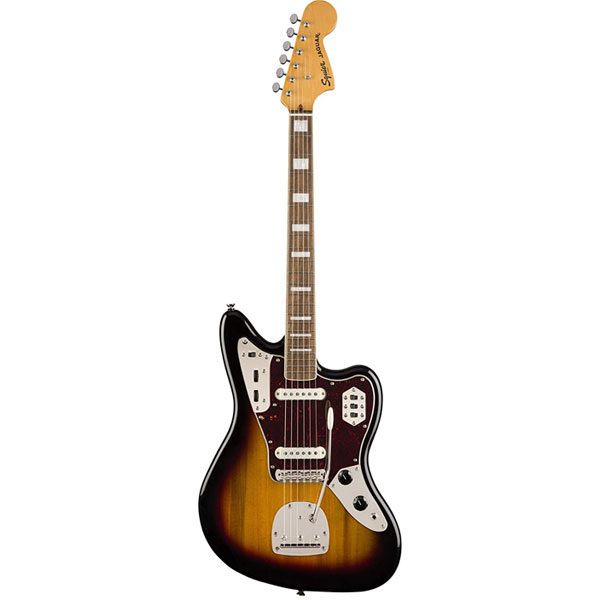
| Estimated Price | $450 |
| Body Wood | Poplar |
| Finish | Tinted Gloss Urethane |
| Neck | Maple |
| Neck Shape | “C” |
| Fingerboard | Indian Laurel |
| Fret Count | 22 |
| Pickups | Alnico Single-Coils |
My Review: The Squire Classic Vibe ’70s Jaguar provides guitarists with the authentic experience of playing one of Fender’s most sought-after guitars, without having to break the bank. Although in years gone by, Squier was seen as a much lesser quality alternative to authentic Fender models, that gap has been bridged recently, with the Classic Vibe Jaguar being a prime example of this.
Featuring an easy-playing 24” scale, a floating vibrato bridge for added sustain, and an aesthetically pleasing finish, this Squier solid-body is a great choice for all guitarists. Add in some Fender-designed Alnico single-coil pickups, and the results are highly impressive.
Well suited to both the studio and the stage, the Classic Vibe ’70s Jaguar produces an array of quality six-string textures. There’s also the unique Jaguar switching system which is one of the standout features of the original version and allows you to broaden your sonic horizons at the flick of a switch.
Build Materials: The body of the Squire 70s Jazzmaster is made from poplar, with a classy gloss urethane finish. The fingerboard is sculpted out of Indian laurel, which plays smoothly underhand. The C-profile neck is made from maple, forming a solid bond with the other tonewoods.
Hardware, Electronics, and Controls: Dual Fender-designed Alnico single-coil pickups have been employed to produce the classic Jaguar warmth. These pickups interact with the unique switching system, so you can flick between the neck and bridge positions, or combine the two. There’s also a set of rhythm circuit controls for more tone-sculpting options.
Bottom Line: The Fender Jazzmaster is known for its unique ability to quickly switch between a refined, warm output and a powerful snarl. For that reason, Squier has designed their version to resemble the original as closely as possible. Thanks to the Fender-designed single-coil pickups and a sophisticated switching system, they’ve achieved their goal.
Popular Related Article: Our List of Must Have Guitar Pedals
11. Yamaha Pacifica Series 012
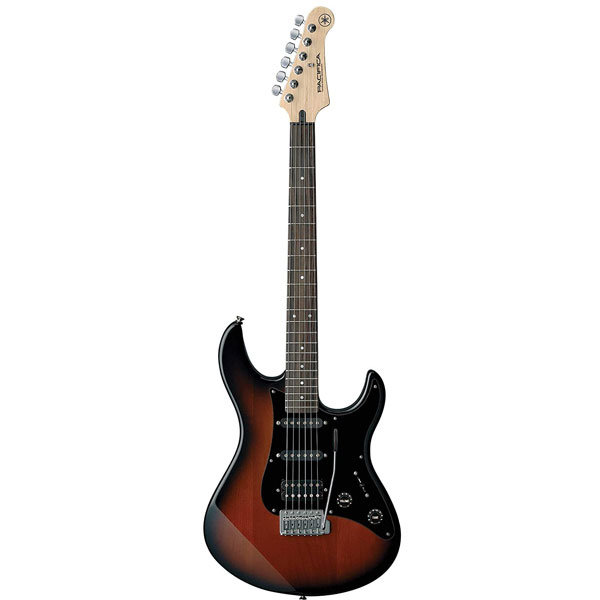
| Estimated Price | $200 |
| Body Wood | Agathis |
| Finish | Gloss |
| Neck | Maple |
| Neck Shape | Bolt-On |
| Fingerboard | Sonokeling |
| Fret Count | 22 |
| Pickups | Dual Single-Coils, Single Humbucker |
My Review: It’s easy to dismiss budget electric guitars, but in reality, one of the greatest things about these instruments is that it doesn’t make a difference how costly or cheap a model is, they all have something unique to offer.
Perhaps better known for their range of elegant acoustic guitars and pianos, Yamaha’s electric guitars often get overlooked. The Pacifica 012 may be one of the cheapest offerings on this list, but it arguably boasts the best value for money. A perfect option for someone at the beginning of their guitar-playing journey, the 012 features a classic double-cutaway design for comfort.
It also houses some features you maybe wouldn’t anticipate being on an entry-level guitar, like vintage-style tremolo, a solid bolt-on neck, and an expressive vibrato bridge. If you’re shopping on a budget and want a reliable electric guitar that performs in multiple styles, the Yamaha 012 is certainly worth considering.
Build Materials: Agathis has been used for the solid-body of the Pacifica 012. This type of wood is commonly found on affordable guitars, due to its ability to rival more expensive materials like maple or mahogany. Yamaha’s construction, as always, has been carefully planned, with each segment of the guitar solidly built and decorated with a classy finish. The neck uses smooth maple, and the fretboard is made from rosewood.
Hardware, Electronics, and Controls: Entry-level guitars require a certain level of versatility. Used commonly in a guitarist’s formative periods, they must be able to experiment with different tones to gain a greater understanding initially. That’s why Yamaha has included a generous 5-position pickup switch, with each setting producing distinctly different timbres. To facilitate this tonal blend, they have used a single humbucking pickup in the bridge position in addition to a pair of clear-sounding single-coils.
Bottom Line: Yamaha’s Pacifica 012 is an ideal option for those who don’t want to spend a fortune to experience a well-built, quality electric guitar. With maple and rosewood used for the neck and fingerboard respectively, the 012 feels like a guitar that much exceeds its cost. Also, the five-switch pickup selector is a perfect tool for exploring the sonic capabilities of the instrument.
12. ESP LTD EC-256FM
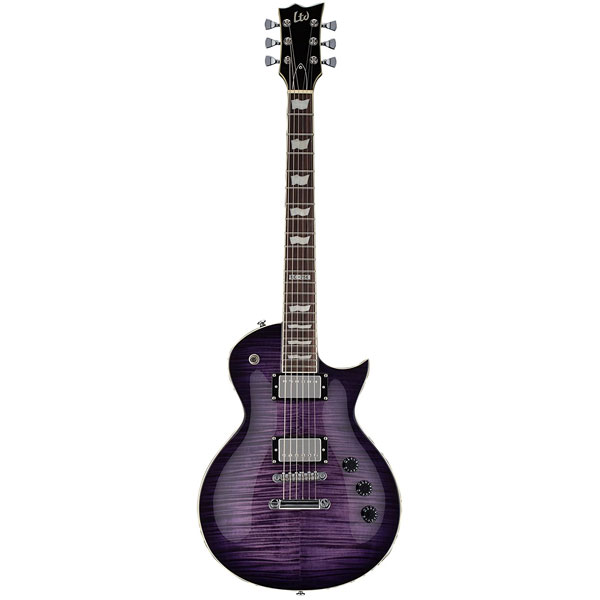
| Estimated Price | $450 |
| Body Wood | Mahogany |
| Finish | Cobalt Blue |
| Neck | Mahogany |
| Neck Shape | Thin “U” |
| Fingerboard | Roasted Jatoba |
| Fret Count | 22 |
| Pickups | LH-150N Humbuckers |
My Review: Founded in Japan almost half a century ago, ESP has steadily built a reputation as one of the go-to providers for electric guitars and basses. Their LTD series originated in 1996, to provide guitarists with more affordable alternatives to the instruments that dominated the market at the time.
Known for their ability to transcend genre, ESP LTD guitars produce a mixture of thick-sounding tones that sound great in rock, blues, jazz, or funk styles of playing. The EC-256FM has the finish of a top-end guitar, with its flamed maple top and detailed binding on the body and neck.
ESP installed dual-humbucking pickups to keep the output full-bodied and powerful. The thin U neck profile makes it a comfortable guitar to play for long periods. 22 extra-jumbo frets make the EX-256FM a great choice for intricate chords and melody players who need plenty of space on the fretboard to express their creativity.
Build Materials: ESP’s LTD guitars use impressively high-end materials. Firstly, there’s the flamed mahogany body which is connected to the three-piece neck of the same wood type. Then, they have used roasted jatoba for the fingerboard, a material that oozes character.
Hardware, Electronics, and Controls: In terms of the electronics installed on the EX-256FM, ESP has chosen a pair of their humbucking pickups. In the bridge position, we have the LH-150B and in the neck position, the slightly sharper-sounding 150N. These humbuckers combine to produce a crisp twang with, especially warm low-mids.
Bottom Line: Further proof that quality solid-body guitars don’t have to cost a small fortune, the ESP LTD 256FM combines high-end materials, solid construction, classy appearance, and a sharp tone. It produces a thick humbucking sound, and with the extra-jumbo frets, is a perfect choice for intricate, technical electric guitar players.
13. Schecter C-6 Deluxe
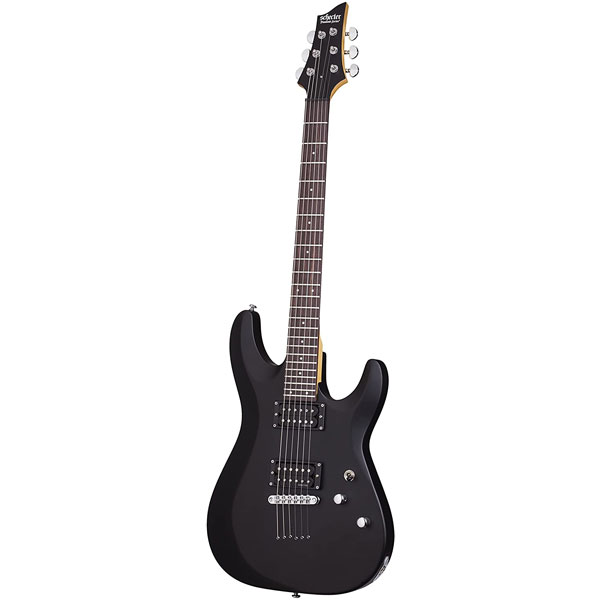
| Estimated Price | $300 |
| Body Wood | Basswood |
| Finish | Gloss |
| Neck | Maple |
| Neck Shape | Thin “C” |
| Fingerboard | Rosewood |
| Fret Count | 24 |
| Pickups | Diamond Plus Humbuckers |
My Review: The C-6 Deluxe is another quality electric guitar from Schecter. Understated in appearance, this no-nonsense guitar is a great choice for musicians of all abilities. Featuring the classic Schecter double-cutaway design, it combines playability and resonance.
The fingerboard contains 24 X-jumbo frets which are perfectly sized for shredding and playing fast, technical riffs. Tonally, the C-6 Deluxe produces a vast array of powerful punchy notes across the frequency spectrum, with particular power in the low-end.
Solid tuners coupled with the robust maple neck ensures that the guitar poses no intonation issues. When combined with distortion pedals, the Deluxe offers a classic snarl that is perfect for heavy rock riff-playing. The Tune-O-Matic bridge further reinforces the solidness of the overall build.
Build Materials: Featuring a responsive rosewood fingerboard that caters for technical and fast playing, a comfortable maple neck, and classy dot inlays, the C-6 Deluxe is built to a very high standard. The body is composed of basswood, which promotes bit and resonance in its output.
Hardware, Electronics, and Controls: To ensure that the tone of the C-6 offers the renowne4d Schecter power, the manufacturers have installed their brand of Diamond Plus humbucking pickups. There’s also a toggle switch that allows you to flick between three pickup positions for added versatility.
Bottom Line: The Schecter C-6 Deluxe is a reliable electric guitar that is ideally suited to heavy styles of rock. With a minimalistic black design, a power-filled output, and a high-quality combination of tonewood materials, this guitar is a great option no matter what stage you are at in your guitar playing development.
14. Ibanez Artcore AF55
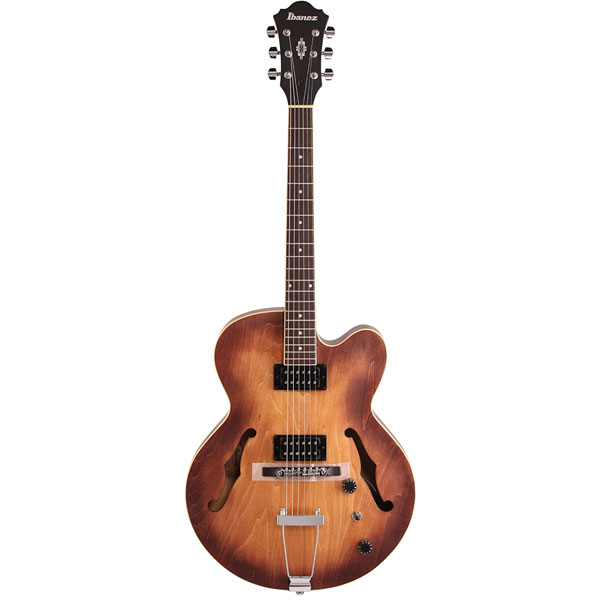
| Estimated Price | $330 |
| Body Wood | Rosewood |
| Finish | Gloss |
| Neck | Maple |
| Neck Shape | Set-In |
| Fingerboard | Rosewood |
| Fret Count | 20 |
| Pickups | Dual-Humbuckers |
My Review: A popular choice for rock guitarists, Ibanez first introduced the Artcore range back in 2002. Since then, it has gone on to become one of the most popular hollow-body instruments for guitarists. With a tone that is full of attitude and the classic Ibanez design at a fairly affordable price, the AF55 is a force to be reckoned with.
At the heart of the AF55’s tone is a pair of well-constructed humbucker pickups. Although they don’t provide the high output of single-coils, these pickups are well-balanced and can go from smooth and sophisticated to snarly and aggressive in response to your playing dynamics.
The classic Artcore set-in-neck offers 20 medium-sized frets. It’s easy to transition from lead playing to chords with this guitar, and sliding between the higher and lower registers doesn’t require any unnecessary effort.
Build Materials: Ibanez has coined a reputation for using high-quality materials without over-pricing their instruments. The Artcore AF55 is a classic example of this, employing maple for the top, back and sides, bound rosewood with pearl dot inlays for the fingerboard, and their signature set-in mahogany neck known for promoting fast playing.
Hardware, Electronics, and Controls: A pair of Ibanez-designed humbucking pickups are installed on this Artcore electric guitar, producing a mixture of angst-ridden low end and smooth, clear treble. There’s a three-way selector for tailoring the tone, and control knobs for both tone and volume.
Bottom Line: Ibanez Artcore guitars are some of the best value hollow-bodies on the market. The AF55 encompasses all of the best qualities from that range, with high-end materials, an immersive array of tonal capabilities, and great compatibility with effects pedals. There’s plenty of sustain offered by the AF55, and with the classic set-in-neck, it has no problems holding tuning.
15. Squier Classic Vibe ‘70s Stratocaster
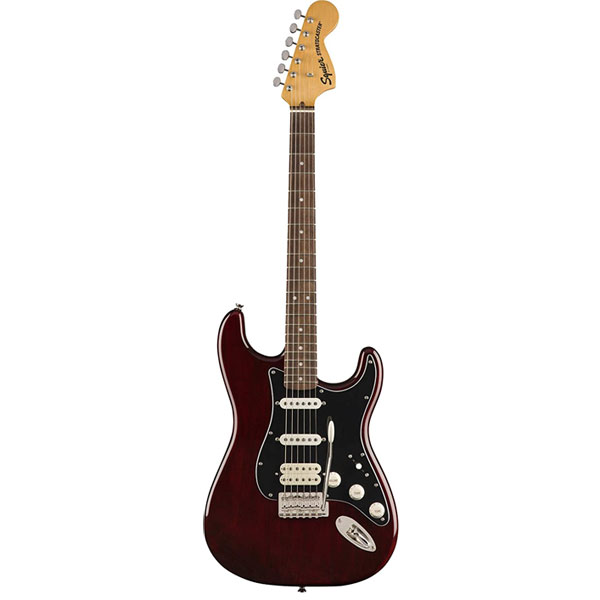
| Estimated Price | $400 |
| Body Wood | Poplar |
| Finish | Vintage Tint Gloss |
| Neck | Maple |
| Neck Shape | “C” Shape |
| Fingerboard | Indian Laurel |
| Fret Count | 21 |
| Pickups | Fender Alnico Single-Coil |
My Review: The terms “authentic” and “vintage” are used as gimmicks to describe many electric guitars, sometimes without justification. The Fender-built Classic Vibe ‘70s Strat, however, deserves these accolades.
Indeed, you can’t beat Fender’s original Strats, that much is obvious. However, it’s simply not always an option if you’re shopping on a budget. That’s where models like this Squier Classic Vibe come in handy. Built to resemble the original as closely as possible, the 70’s Strat is impressive in terms of playability and tone.
Featuring the iconic triple-coil Strat design, this guitar comes very close to the legendary 70’s tone that graced so many brilliant recordings. Dynamically responsive, clear sounding, and filled with unmistakable Stratocaster twang, the Squier Classic Vibe ’70s model is a brilliant, affordable option for all guitarists.
Build Materials: With a solid poplar body that is finished with gloss polyurethane, a C shaped maple neck that is smooth underhand, and a high-end Indian Laurel fingerboard, you’d be forgiven for thinking this Stratocaster was genuinely from the 1970s.
Hardware, Electronics, and Controls: There’s a 6-saddle vintage-style synchronized tremolo for the bridge, which is largely responsible for the guitar’s feel and playability. The pickups are Fender-designed Alnico single-coils, producing the revered Strat twang. All of the tone and volume pots have an aged-white design, which adds to the vintage feel of the guitar.
Bottom Line: It’s incredible how much Squier Stratocasters have improved in recent years. Designed and produced by Fender, it’s no surprise that the tone matches up to the original models. Using top-tier materials, a trio of single-coil pickups and slightly aged finishes for the body and control knobs, the Classic Vibe 70’s Strat is a brilliant alternative to the full-priced models.
16. Epiphone Les Paul Special II
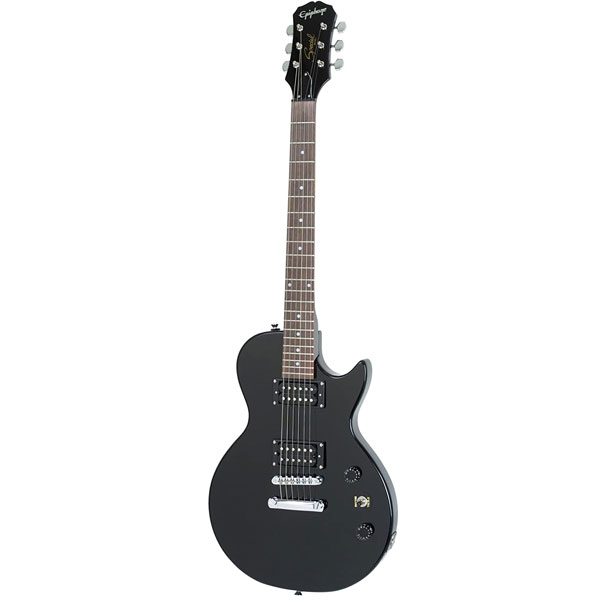
| Estimated Price | $200 |
| Body Wood | Alder/Mahogany |
| Finish | Gloss |
| Neck | Mahogany |
| Neck Shape | Slim Taper |
| Fingerboard | Rosewood |
| Fret Count | 22 |
| Pickups | Humbucker |
My Review: Epiphone’s best-selling model, the Les Paul Special II is a perfect introduction to solid-body guitars. Not only does the guitar offer the timeless Gibson-like tone that countless guitarists have used over the years, but it also features some contemporary improvements.
A workhorse guitar, the Les Paul Special II features the trademark body shape with a bolt-on Mahogany neck inspired by models of the 1960s. Voice by dual open-coil humbucker, the signature Les Paul tone is presented in an affordable format.
Equipped with 500K pots for adjusting the dynamics and tone of the guitar, and with sparkling nickel hardware, the Les Paul Special II combines affordability with class. The guitar is available in multiple finishes, including the iconic vintage sunburst or a special wine red version.
Build Materials: The LPII has high-quality build materials for such a low-priced guitar. The body is made from mahogany, as is the bolt-on, SlimTaper neck. The fretboard is made from rosewood, which is smooth and expressive and dotted with inlays.
Hardware, Electronics, and Controls: Creating the classic Les Paul tone while keeping the costs down isn’t an easy task, but Epiphone has produced a valiant effort. With dual-open coil humbuckers, a three-way selector, tone and volume pots, and a stop-bar tailpiece, the LPII comes very close to the original tone.
Bottom Line: Epiphone’s Les Paul Special II offers guitarists the opportunity to play an authentic-feeling classic solid-body at a very fair price. Solidly constructed, and with extreme care taken over creating the tone of the Les Paul, this affordable guitar is a great choice for seasoned players and novices alike.
17. Fender Kurt Cobain Jaguar
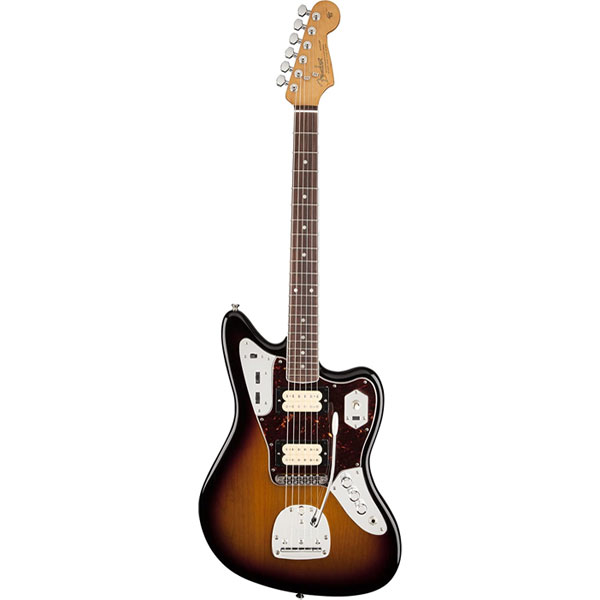
| Estimated Price | $1240 |
| Body Wood | Alder |
| Finish | Gloss Urethane |
| Neck | Maple |
| Neck Shape | Modern “C” |
| Fingerboard | Rosewood |
| Fret Count | 22 |
| Pickups | DiMarzio DP100 Humbuckers |
My Review: Few guitarists have made such an impression on rock music as Nirvana’s frontman, Kurt Cobain did. It’s only recently that his guitar playing has received the recognition it deserves. With his powerful Jaguar tone, he revolutionized rock guitar forever.
The Fender Kurt Cobain Jaguar is a fitting tribute to his genius. Producing the dark, mysterious intensity and massive output that was present in Nirvana’s music, this stunning electric guitar is rich with top-end components that have been meticulously designed.
Notably, there’s a modified lower switch plate installed for sonic variety. The black textured hard shell has a vinyl finish, making it feel and look authentically grunge. To provide the power, this Jaguar signature is kitted out with a pair of the finest DiMarzio pickups.
Build Materials: The Kurt Cobain Jaguar has a durable gloss polyester finish over the alder body. The C shape neck is made from maple, and a rosewood fingerboard supports energetic styles of playing. Pearloid dot inlays complete the vintage look of the guitar.
Hardware, Electronics, and Controls: Power and aggression are two of the main qualities associated with Kurt Cobain’s guitar playing. To ensure that both are present in abundance, Fender chose a DiMarzio Super Distortion DP100 pickup for the bridge, along with the PAF 36th Anniversary DP103 in the neck position. This combination is filled with character and attitude.
Bottom Line: Filled with high-quality attributes and extremely player-friendly features, the Fender Kurt Cobain Jaguar is an exceptional rock guitar. With unique controls including two split circuits for rhythm and lead playing, it has all of the qualities required for heavy styles of playing. The classy hardware and tonewood combination make the Kurt Cobain Jaguar an inspiring instrument to play.
18. Sterling by MusicMan AX3S
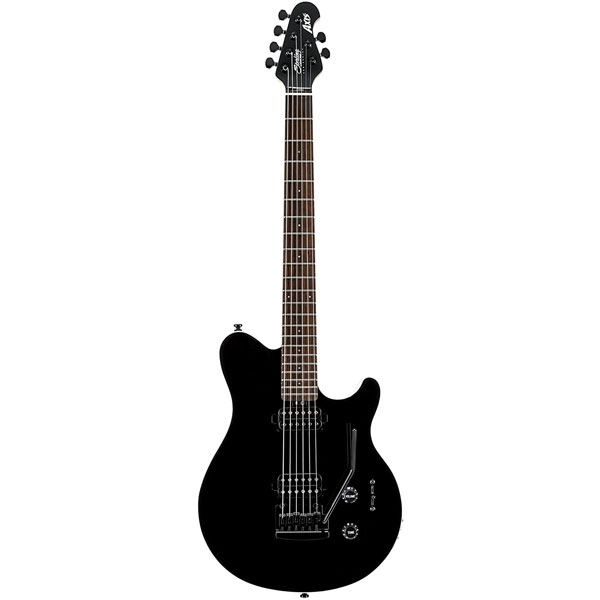
| Estimated Price | $400 |
| Body Wood | Linden |
| Finish | Gloss |
| Neck | Maple |
| Neck Shape | Bolt-On |
| Fingerboard | Jatoba |
| Fret Count | 22 |
| Pickups | Dual Humbuckers |
My Review: The Music Man range has produced some impeccable guitars over the years. When Eddie Van Halen announced his signature collaboration with them in the 1990s, the rock world took notice, and the guitar’s popularity spiked significantly.
Music Man’s Sterling brand was formed to bring the classic design into a more affordable and accessible format. The AX3S has a solid basswood body, like the American original models. The appearance is unique and instantly recognizable.
Sonically, the AX3S produces a plethora of crisp clean tones, which can be significantly adjusted by the extensive 5-way switching mechanism. There’s an inviting blend of warm and twangy tones across the frequency range.
Build Materials: With a basswood single-cut body, a bolt-on hard maple neck that has a natural finish, and a smooth-playing jatoba fingerboard boasting 22 narrow frets spanning across a 12” radius, the Music Man AX3S is an extremely well-constructed solid-body electric guitar.
Hardware, Electronics, and Controls: In terms of controls, the AX3S houses singular volume and tone pots, in addition to a 5-way blade selector. This can be used to explore the full range of tones produced by the dual uncovered Sterling humbuckers that sound warm, jangly, and provide good versatility.
Bottom Line: Superior to most entry and mid-level electric guitars, the Music Man Sterling AX3S is a well-rounded electric guitar that borrows the best features from its more expensive counterparts. Solidly built and fairly lightweight, it’s a great companion for energetic performers who require an array of humbucking tones, at a very reasonable price indeed.
19. ESP LTD Deluxe EC-1000 VB
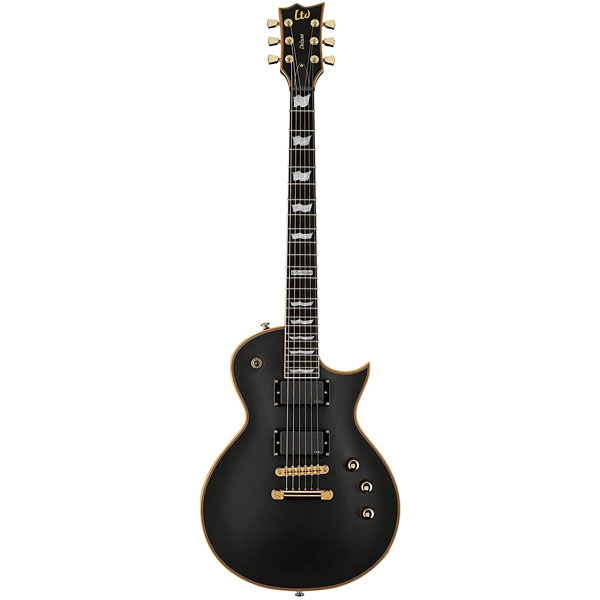
| Estimated Price | $1000 |
| Body Wood | Mahogany |
| Finish | Vintage Burst |
| Neck | Mahogany |
| Neck Shape | Thin “U” |
| Fingerboard | Macassar Ebony |
| Fret Count | 24 |
| Pickups | EMG 60 & EMG 81 Humbuckers |
My Review: With its stunning appearance, meticulous design, and beautiful voice, the EC-1000 by ESP is one of the finest electric guitars available today. Combining smooth playability with plenty of sonic power, it’s the type of guitar that inspires you to come up with new ideas.
Offering a vintage-style neck and headstock binding, the EC-1000 is crammed with premium-quality components. There’s the addition of LTD locking tuners and a locking TOM bridge/tailpiece combination, which ensure the longevity and tuning stability of the guitar.
The Thin U shaped neck differentiates this ESP guitar from your standard solid-body offering. 24 wide frets are spaced perfectly to allow for expressive styles of lead and rhythm playing, and with eye-catching gold hardware to complete the elegant look, it’s hard to find any faults with this guitar.
Build Materials: The ESP EC-1000 boasts a beautifully-finished mahogany body, along with a three-piece neck made from the same wood type. It also has a vintage burst finish, and the Massacar Ebony fingerboard feels responsive and articulate.
Hardware, Electronics, and Controls: Gold hardware adds class to the guitar’s appearance, and complements the Tonepros locking TOM and tailpiece perfectly. EMG 60 and EMG 81 humbuckers are used for the neck and bridge pickups respectively. There are also two volume pots, one tone pot, and a pickup toggle switch for tonal alterations.
Bottom Line: ESP’s LTD EC-1000 blends the old with the new. In terms of appearance, it looks like a refined vintage guitar, and the tone it produces has an air of nostalgia about it. Despite that, this premium solid-body has a modern sharpness that sets it apart from tributary models and makes it a wonderful option for guitarists across multiple styles.
20. Epiphone Limited Edition ES-335 Pro
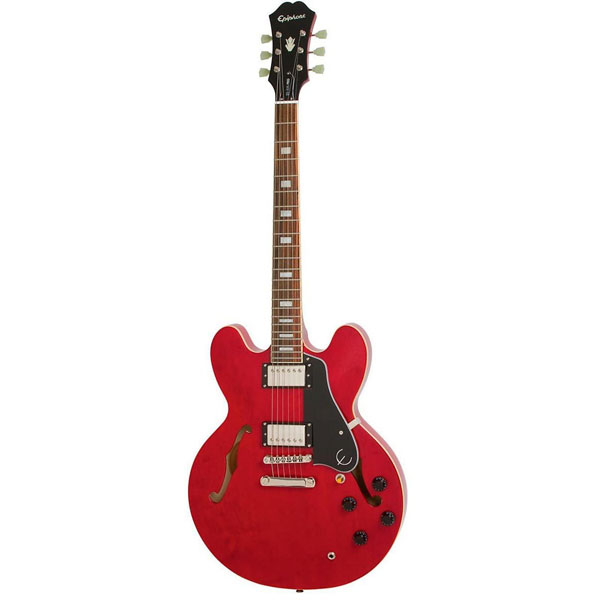
| Estimated Price | $700 |
| Body Wood | Maple |
| Finish | Gloss |
| Neck | Mahogany |
| Neck Shape | “D” Profile |
| Fingerboard | Pau Ferro |
| Fret Count | 22 |
| Pickups | Alnico Pro Humbuckers |
My Review: Epiphone’s ES-335 PRO is a celebration of the classic model that has been a popular guitar since its first production back in 1958. Featuring the signature Thinline archtop design, this Epiphone semi-hollow body is a concoction of vintage prestige and modern performance.
The aesthetical design of the ES-335 PRO is rich with unique subtleties. For example, the Pau Ferro fingerboard has a slightly weathered finish, giving it character in abundance. There’s also the SlimTaaper D profile neck that looks as good as it plays.
335 guitars are renowned for their resonant tone, rich in mid-range warmth and coloration. The ES PRO version stays true to this blueprint, with Alnico Classic Pro pickups providing the output. Nickel hardware completes the striking look of the guitar, and the stop bar tailpiece improves its stability.
Build Materials: The materials used by Epiphone when constructing the ES-335 PRO include: a smooth mahogany neck that is highly playable, a maple and birch double-cut hollow-body, and a fast-playing Pau Ferro fingerboard with mother-of-pearl small block inlays.
Hardware, Electronics, and Controls: Epiphone’s Alnico Classic pro, 4-wire humbuckers are used in both the bridge and neck positions. There’s an all-metal 3-way pickup selector, along with a pair of pickup volume controls each with push/pull coil-splitting.
Bottom Line: The ES-335 Pro is the latest in Epiphone’s long line of classic hollow-body guitars. With an appearance rich in elegance, and a resonant tone that makes even the most basic of chords sound interesting, this guitar is a beautiful creation. The choice of Alnico Pro pickups adds power to the output, and the nickel hardware solidifies the classic appearance.
21. Squier Classic Vibe ‘70s Telecaster
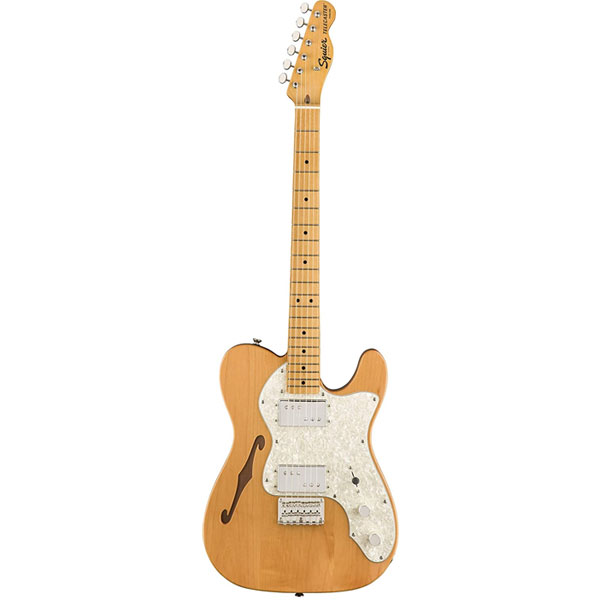
| Estimated Price | $450 |
| Body Wood | Poplar |
| Finish | Gloss |
| Neck | Maple |
| Neck Shape | “C” Shape |
| Fingerboard | Maple |
| Fret Count | 21 |
| Pickups | Fender Wide Range Humbuckers |
My Review: Squier’s Classic Vibe ‘70s Telecaster is an accessible version of the revered Fender guitar, which performs to a very high standard. Fender overlooked the design process and manufacturing of the guitar, so it should come as no surprise that it is filled with top-tier features and components.
To ensure that the Classic Vibe Tele produces the famous twanging tone, modern hardware electronics have been combined with retro stylistic features. The four-screw bolt-on neck is sturdy, without adding excess weight to the guitar.
Where this 70s style Tele differs from other models, is in the choice of pickups. To create an authentic 70s tone, Squier has used a pair of Fender’s Wide Range humbuckers. Ideal for crunching riffs, full-bodied chords, and thick textures, these pickups sound incredible.
Build Materials: The Squier Classic Vibe 70s Tele has a solid poplar body that is bolted onto the playable maple neck. This combination provides sturdiness and mobility. The C shaped neck profile has a 9.5″ radius, so fast playing is made much easier. The fingerboard is made from maple.
Hardware, Electronics, and Controls: A pair of Fender-designed Wide Range Humbucking pickups give this Classic Vibe Telecaster a uniquely rich tone, that screams 70s rock n’ roll. Authentically warm and full of character, these pickups are a very interesting addition.
Bottom Line: Every guitarist would love to get their hands on a genuine 1970s Telecaster, but this is simply not realistic for many. That’s why Fender designed a commendable tribute model with the Squier Classic Vibe 70s offering. It sounds and plays remarkably like a true vintage Tele, with the Wide Range humbuckers producing a thick, immersive range of tones.
22. Gretsch G5420T
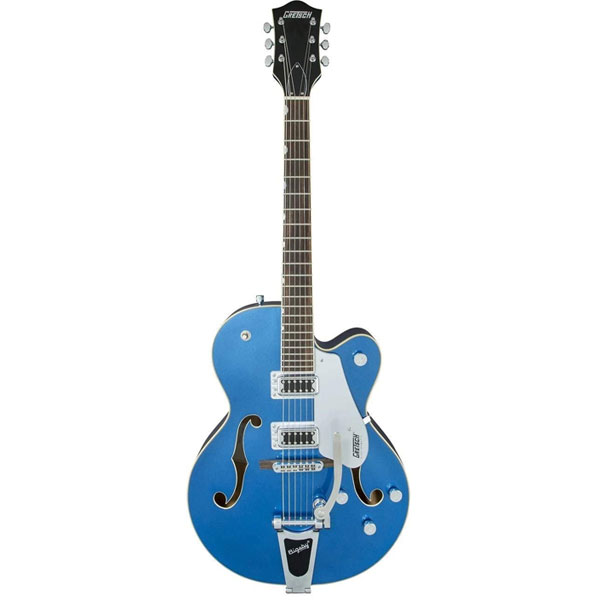
| Estimated Price | $800 |
| Body Wood | Maple |
| Finish | Gloss |
| Neck | Maple |
| Neck Shape | Standard “U” |
| Fingerboard | Rosewood |
| Fret Count | 22 |
| Pickups | Black Top Filter ’Tron Humbuckers |
My Review: If anyone knows how to produce a classic hollow-body electric guitar, it’s Gretsch. Adding to their exceptional Electromatic range, the G5420T inspires you to produce powerful, pure-sounding tones that are well suited to heavy or soft styles of rock.
Filled with resonance and color, the G5420T has the trademarked Filter’Tron voice. This means that the sound is punchy and clear across the fretboard, with none of the frequency ranges suffering in terms of strength and power.
This hollow-body guitar sounds and looks quintessentially rock n’ roll. The classy inclusion of Pearloid inlays, aged tonewoods, and oversized F-holes add to its stunning appearance. Although it looks heavy, somehow Gretsch has managed to minimize its weight to improve playing stamina.
Build Materials: The Gretsch G5420T hollow body guitar uses a single-cutaway design to provide access to the higher frets. The body itself is made from 5-ply maple, with aged white binding. For the neck, they chose maple with a smooth gloss urethane finish, in the standard U shape. The fingerboard is made from rosewood and boasts 22 medium jumbo frets.
Hardware, Electronics, and Controls: To enhance the resonant, versatile tone of the G5420T, Gretsch selected Black Top Filter’Tron pickups. These can be toggled using the 3-way selector, and further adjusted using the volume or tone pots.
Bottom Line: Classical in appearance but contemporary in tone, the Gretsch Electromatic G5420T offers an abundance of features making it sound and play like a dream. With unique BlackTop, pickups adding power to the output, and a combination of tonewoods that feel solid to hold, this hollow-body guitar is a brilliant choice for guitarists who play a lot of chords and textural pieces. This is one of the best electric guitars at the under $1000 price point.
23. Epiphone Les Paul Custom Classic Pro
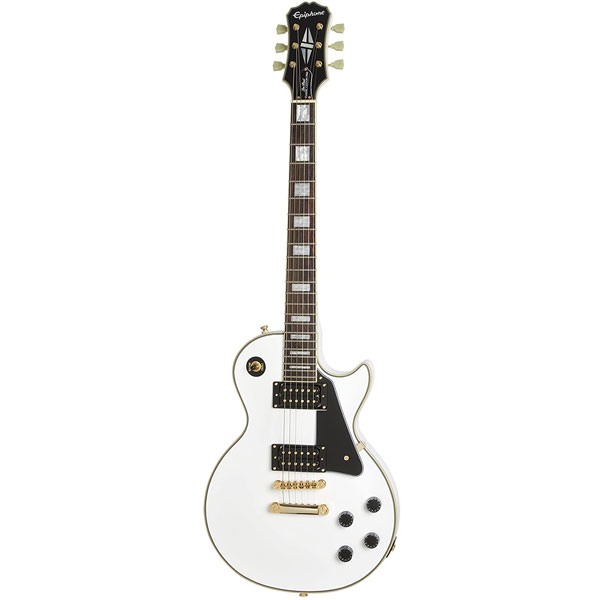
| Estimated Price | $680 |
| Body Wood | Mahogany |
| Finish | Gloss |
| Neck | Mahogany |
| Neck Shape | “D” Profile |
| Fingerboard | Rosewood |
| Fret Count | 22 |
| Pickups | Gibson YSA Open-Coils |
My Review: The Epiphone Les Paul Custom Classic Pro is a tribute to one of the most iconic guitars of all time. The Custom model is an incredibly playable solidbody guitar, offering the classic rich array of tones that made the original so popular.
With signature gold hardware and an ebony finish, the Custom Classic Pro looks distinguished, to say the least. In terms of tonality, it sounds balanced across the fretboard, and is compatible with a host of effects pedals, from reverb to overdrive, to wah.
The inclusion of Epiphone’s ProBucker pickups with coil-splitting further adds to the power output of the guitar. The neck is fully bound, as is the headstock, making it solid and durable. It’s a truly fitting tribute to the original Gibson Les Paul, at a much more affordable price.
Build Materials: The body of the Epiphone Les Paul Custom Pro is made from mahogany, with a maple veneer top. The neck is also made from mahogany, chosen for its smooth feel underhand. For the fingerboard, Epiphone chose to use rosewood, with pearl dot inlays.
Hardware, Electronics, and Controls: A pair of Epiphone-designed ProBucker humbucking pickups are positioned on the bridge and neck of the Les Paul Custom. These pickups ensure that the classic warm, punchy tone of the Les Paul is present in abundance.
Bottom Line: Gibson Les Pauls are unquestionably brilliant solid-body electric guitars, but their price can be a stumbling block for many guitarists. Thankfully, Epiphone has produced a tributary model that comes very close to the original. With a classy, vintage appearance, a range of high-end materials, and two humbucking pickups, it’s genuinely hard to tell the difference between this guitar and a genuine Gibson Les Paul.
24. Fender Player Telecaster HH
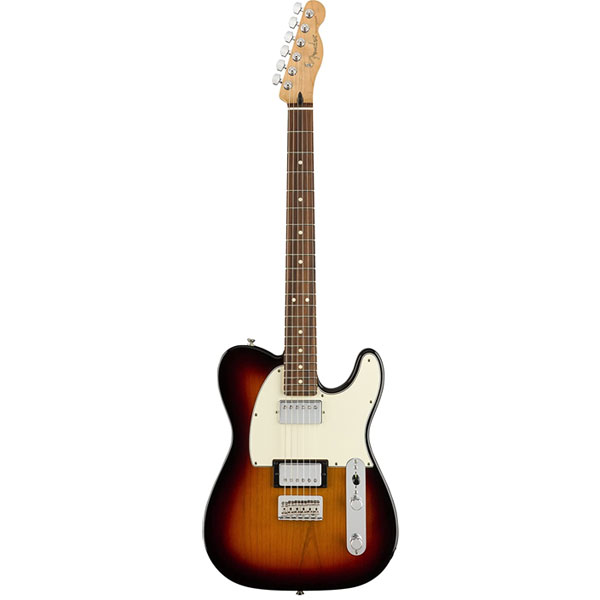
| Estimated Price | $730 |
| Body Wood | Alder |
| Finish | Gloss |
| Neck | Maple |
| Neck Shape | Modern “C” Profile |
| Fingerboard | Morado |
| Fret Count | 22 |
| Pickups | Fender Humbuckers |
My Review: Another addition to Fender’s vast range of Telecasters, the Player HH model features several subtle tweaks. Fender has used the classic Tele combinations of woods to create the much-revered tone.
The use of gloss polyester coating gives this Player Series Telecaster a refined feel and look. It also helps to ensure the longevity of the body, no matter how frequently the guitar is used. The use of two humbuckers produces a thick, full-sounding tone.
The bridge is where this model differs from the stereotypical Telecaster. Instead of using the common old-school 3-saddle design, they have opted for a 6-saddle design which has bent steel saddles, improving the tuning stability and adding more resonance to the tone.
Build Materials: Fender has used the classic combination of an alder body, modern C-shaped maple neck, and smooth maple fingerboard with a 9.5″ radius. The neck is shaped in a C profile, and the body has a gloss polyester finish.
Hardware, Electronics, and Controls: A pair of Player Series Alnico 2 humbucking pickups have been employed in the bridge and neck positions. These pickups produce a wide, fat tone with plenty of articulation in the mid-high frequencies. Additionally, there are the classic knurled flat-top control knobs for tweaking the tone and volume of the guitar.
Bottom Line: The beautiful thing about Fender Telecasters is that due to the long history of production, there are many variations to choose from. The Player HH model stays true to the qualities which made the guitar so popular in the first place but adds some interesting adjustments to give it a unique feel, appearance, and tone.
25. Ibanez Artcore AG75BS
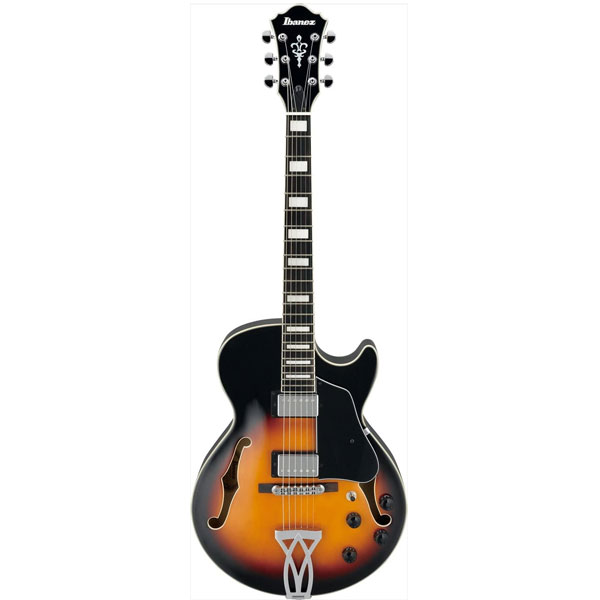
| Estimated Price | $400 |
| Body Wood | Maple |
| Finish | Gloss |
| Neck | Mahogany |
| Neck Shape | Bolt-on |
| Fingerboard | Rosewood |
| Fret Count | 22 |
| Pickups | Ibanez Humbuckers |
My Review: Since Ibanez first broke onto the scene back in 1957, they have taken an unorthodox path to becoming one of the leading producers of electric guitars in the world. Known as no to shy away from experimentation and embracing new concepts, they have produced many guitars that perhaps weren’t commercial successes, but when they came up with the Artcore range, they struck gold.
The AG75BS is a perfect example of how their experimentation over the years has paid off. A classic hollow-body, it is ideal for rhythm guitarists who need a chunky, thick tone for their chord playing. For this reason, it’s perfect for jazz guitarists, but also sounds great in a rock band.
With a single-cutaway, archtop design, the AG75BS is comfortable and easy to navigate. Ibanez has used a blend of quality tonewoods to promote the resonance, and the unique addition of violin style F-holes on the front of the body, they have set it apart from your average hollow-body guitar.
Build Materials: The Ibanez AG75BS has a smooth-finished maple body, a responsive mahogany neck, and a classy rosewood fingerboard. The combination of tonewoods enhances the resonance of the guitar, so much so that it is even quite audible when it’s not amplified!
Hardware, Electronics, and Controls: For the hardware on the Artcore AG75BS, Ibanez chose black to complement the sunburn design. Their brand of humbucking pickups has been installed to get the best out of the natural tone of the guitar, and there’s the standard inclusion of four tone and volume pots with a 3-way pickup selector.
Bottom Line: The Artcore range is arguably Ibanez’s greatest achievement to date, offering premium hollow-body guitars at fair prices. The AG75BS combines a thick, resonant tone with streamlined playability, and the interesting inclusion of violin-style F-holes adds an individual touch.
Choosing the Right Electric Guitar (Buying Guide)
The remainder of this post will explore the topic of electric guitars, starting with some basic, beginner concepts and getting into some of the more advanced stuff later on. After reading this comprehensive guide, you’ll have a clear idea of what you should be looking for in an electric guitar, and the results to expect.
In my opinion, there is no other instrument that is as versatile as the electric guitar. Sonically, there is no end to the possibilities that it provides. It would be difficult to find another instrument that has been used across so many genres, to produce such a vast array of tones, and used in so many different ways.
When you dissect an electric guitar, it’s a very simple instrument. Essentially, it is just pieces of wood fixed together, which pull some metal wires to create tension and an electronic output which amplifies the sound. Somehow, within this seemingly simplistic design, the electric guitar has been responsible for creating things that are so beautiful and powerful, it’s hard to describe with words.
Like the piano, the electric guitar will never go out of fashion. Although it’s a relatively new instrument, it’s here to stay. Universally loved by musicians and fans of music, it’s a timeless instrument that we humans are blessed to have discovered.
Body Materials Explained
The overall tone of an electric guitar is the result of a combination of factors. There’s the choice of pickups, strings, dimensions, and of course, the amplifier you pair it with. Before all of those components come into play, however, the choice of tonewoods and other materials has the initial and most significant impact.
An electric guitar can be broken down into three sections: the body, neck, and fretboard. The choice of woods used to construct this trio will produce wide-ranging results, and unlike other components such as pickups, strings, and hardware, they cannot be changed at a later date. That’s why it’s so important to research the results that combinations of woods produce before you decide on the right electric guitar for your needs.
The rocking plate is then hooked up to the potentiometer, and when the plate is moved, it causes the internal voltage to be changed abruptly, creating the wah sound. This gives the guitarist complete control over the frequencies that the wah pedal effects, simply by moving the rocking plate back and forth.
You might have noticed patterns in the wood choices of certain manufacturers. Many have their favorite combinations that produce the signature sound of that brand. Nevertheless, manufacturers are still willing to try new wood combinations now and then. The modern economic and environmental issues surrounding certain wood types have forced manufacturers to rethink the materials they use, and consequently, it’s harder to get the classic tonewood combinations of years gone by.
To ensure that the quality of electric guitars hasn’t suffered as a result of the restrictions, exotic woods and other alternatives have become popular. This has given the electric guitar a new lease of life. In the following sections, we’ll explore tonewoods, and how they affect the sound, performance, and cost of an electric guitar.
Why Don’t All Tonewoods Sound the Same?
Particular woods are known to produce a distinctive sound. Some are bright, some sound more dampened, and others produce more projection. This is a simple concept to understand, but why it is the case is a more complicated matter.
The organic nature of wood means that its shape and other characteristics change with time. As wood ages, its grains become deeper and the changes that occur are impossible to predict. These imperfections and changes may seem like negative aspects, but in reality, they are responsible for the unique sounds that each type of wood produces.
The space in between the grains in wood plays a large role in shaping the sound it produces. If the wood is classed as sparse, or less dense, that would indicate that there is a lot of space in between the grains for the vibrations to move around in, resulting in a darker tone and lots of sustain. If, on the other hand, wood is denser, then less space will be present between the grains, making the tone sound brighter, with a sharper attack and more articulation.
Electric Guitar Body Tonewoods
There are multiple kinds of wood commonly used for the body of an electric guitar. Commonly, these woods are used to construct the neck, also. The body tonewood has a significant impact on the overall sound of an electric guitar. Some of the most commonly used woods are:
- Mahogany
- Maple
- Poplar
- Walnut
- Koa
- Basswood
- Alder
- Ash
Mahogany is an umbrella term that describes a range of hardwoods. In its pure form, mahogany is rare and only found in the Amazon and certain parts of Mexico. The more common forms of Mahogany boast similar attributes to the true wood. This type of wood is known for its ability to self-preserve, resist rot and damage, and as a result, it lasts for a long time. In terms of the sound it produces, Mahogany offers a warm, understated tone with dampened treble-frequencies. It was the wood of choice for Gibson guitars for decades.
Maple is another commonly used wood for electric guitar bodies. It can be separated into two categories: hard and soft maple. The harder form originates in Canada and the USA and is frequently used for guitar necks because of its robustness and durability. The harder variety is what you will usually find as an electric guitar’s body, although soft maple is sometimes used for laminate tops, especially heavy bodies. Hard maple produces a bright, punchy tone with defined upper-mids and sharp high-end frequencies.
Alder is also a highly popular choice for electric guitar bodies. This tonewood boasts impeccable balance, with a strong frequency response across the spectrum of a guitar’s fretboard. The blend of low, mid, and high frequencies makes Alder great for many styles of guitar playing. Rather than specializing in a singular style, alder is well suited to guitarists who mix up rhythm and lead playing and use a wide dynamic range. Alder is commonly used on Fender guitars post-1950’s.
Basswood is also worth mentioning. This material divides opinion amongst guitarists, with some claiming it sounds cheaper, and less refined than other popular tonewoods. Others love this sound, and that is reflected by the number of legendary guitarists who choose to use it. Basswood is often used in affordable, entry-level guitars. It produces a warm tone that is less sharp and defined than more expensive alternatives.
Electric Guitar Fretboard Woods
Fretboard wood choices need to combine tone with comfort. They are often selected along with the body tonewoods to blend the characteristics and create an intentional result. Some of the most common fretboard woods are:
- Rosewood
- Maple
- Ebony
- Pau Ferro
Rosewood is by far the most popular choice when it comes to guitar fretboards. In the past half-century, a huge number of guitar models have used this material. Its popularity is down to a few factors: firstly, it is highly durable and able to withstand heavy usage, also it produces a warm, immersive tone, and finally, it produces natural oil, making it smooth underhand and very comfortable to play.
Maple is dense and heavy and is often used for the entire neck of a guitar, including the fretboard. It has a light, classy appearance and ages naturally over time. One of the best things about using maple for fretboards is that it complements most of the tonewoods used for the body of the guitar, improving the clarity of tone. There are various types of maple which all have different grains, such as flame maple and quilted maple. This material improves the overall brightness of a guitar.
Ebony is another hugely popular choice for electric guitar fretboards. Its unique, dark appearance is popular on all kinds of models. Ebony usually comes in two varieties: Asian, and African. African ebony is most common, due to its consistent color. Metal guitarists often favor ebony for its dark aesthetics and its fast-playing ability. With a natural smoothness, transitioning quality up and down the frets is easier.
Pau Ferro is very similar to rosewood in terms of appearance and feel. It’s used by Fender on their Mexican range of guitars. Compared to rosewood, pau ferro has a tighter grain and a more refined tone. The attack is sharper, and the warmth is very similar to rosewood.
Single Wood vs. Combinations
Electric guitar bodies that are made from one specific wood are often significantly more expensive than those which combine multiple tonewoods. Although there are certain benefits to using consistent materials on an electric guitar, there’s not much evidence that suggests it improves the tone or playability very much.
Guitar bodies and necks are commonly made from 2 pieces of wood, or sometimes even more. The wood is secured using a process known as tight-bonding, where strong glue fixes the multiple pieces of wood together. This is known to improve the longevity of a guitar, and sometimes even improves its resonance.
Types of Pickups Explained
Now that we’ve covered the impact that certain wood types have on an electric guitar, let’s get into another main contributor – pickups. These mechanisms are the reason we can enjoy amplified guitar, so their pivotal role cannot be overstated. Pickups come in many varieties, and as technology continues to progress, more and more options become available.
Certain pickups are best-suited to specific genres and styles of guitar playing. They have such a transformative effect on the sound of the electric guitar, that choosing the right one for your personal needs is just as important as choosing which pedals to include in your rig.
So what exactly are pickups? Simply put, an electric guitar pickup is a wire-enwrapped magnet. It takes the vibration caused by the guitar’s strings being strummed or plucked and turns those vibrations into an electronic signal. That electronic signal is then sent to the amplifier, where it becomes an audio signal. This sounds simple, but when you take some time to think of how the pickup works, it’s an incredible invention that the electric guitar relies on to produce any amplified sound.
Single Coil
The earliest type of pickup to be produced, single-coils are used in popular guitars like Fender Telecasters and Stratocasters. They use a singular magnet and produce a wide range of tones. Compared to humbuckers, they are considered brighter and sharper sounding.
The only issue with single-coil pickups in the past is that they were prone to producing noise. This has been somewhat rectified as technology surrounding pickups has progressed. Single coil pickups have been used by countless artists across all genres, and to this day remain as popular as ever.
Humbuckers
Humbucking pickups were invented to combat the noise issues that plagued their single-coil counterparts. Instead of using a singular magnet, humbuckers employ two single-coil pickups which cancel out the 60-cycle hum that earlier pickups fell victim to. The name refers to “bucking the hum”, meaning canceling the unwanted noise.
In terms of the tone produced, humbuckers are considered to be thicker sounding than single coils. They are used in several popular electric guitars and are renowned for producing a warm, immersive tone. Popular amongst jazz, blues, and soul guitarists, humbuckers are great for melodic players who want the intimate tone of their instrument to shine through.
P-90
P-90 pickups are essentially a blend of single-coil and humbucking pickups. They produce a higher output than single coils but don’t quite reach the levels achieved by humbuckers. This means they have a decent amount of depth to their tone, making them perfect for rock n roll and blues playing, but not quite heavy enough for metal.
Strings
The strings that you choose to install on your electric guitar can make or break your playing. With so many varieties available, it can be difficult to know which to choose. Guitar strings are generally made from composite metal, and each variety has different specifications.
Depending on the style of guitar that you play, you will need to choose strings with a certain gauge. The gauge of a string refers to its thickness, with heavier gauges usually being preferred by guitarists who play heavier styles, like metal or hard rock. Lighter-gauge strings are thinner, and therefore better for bending notes. These strings are usually popular amongst melodic guitarists who play less aggressively. Of course, there are exceptions to these stereotypes. Some guitarists who play heavier styles may use lighter strings to create more of a unique sound. It boils down to personal preference.
Neck Profiles Explained
The neck profile of a guitar is a term used to describe the shape of the guitar’s neck. The neck profile doesn’t affect the way the electric guitar sounds, but it does impact the way it feels, and its playability.
There are three main categories of neck profile: C-shaped, V-shaped, and U-shaped. C-shaped necks are the most common amongst modern guitars. They are employed for their comfort, with an oval shape that accommodates many playing styles. Popular guitars like the Fender Strat use C-shaped necks these days.
V-shaped necks are also popular, usually amongst technical guitarists who like to rest their thumb over the edge of the fretboard. This type of neck profile has been around for a long time and is found on many vintage guitar models.
The U-shaped neck is another common type. It is featured on a select few Telecasters and has thick, round-shaped, similar to a baseball bat. There are subdivisions to U-shaped necks, which are categorized by the year that they were made.
Additional Controls:
Electric guitars are likely to have certain controls installed on them. These are called potentiometers, and control aspects of the output like tonality and volume. Commonly, you’ll find separate controls for the neck and bridge pickups on a guitar, which allow you to tailor the frequency output and adjust the sound without having to use an EQ pedal or access the mixer.
Volume controls are important because they allow you to kill the sound instantly if feedback occurs, or turn it down if levels don’t match with the rest of the band. You can also use volume pots to fade in or fade out a note and create a dynamic variance within your playing.
Pickup selectors are also commonly included. These switches can be toggled to select the dominant pickups, transforming the nature of the guitar’s tone. Bridge and neck pickups produce vastly different sounds, so this is useful for differentiating between rhythm and lead parts, or solos and chords.
Using Electric Guitars and Amplifiers
Electric guitars go hand in hand with amps. As we previously covered, the components that are fitted on the electric guitar itself largely impact the sound it produces. The interaction between the instrument and amplifier is arguably as pivotal.
There is a multitude of amplifiers on the market, and which one you choose depends mainly on the style you’re aiming for. The classic rock n’ roll sound of the 60s and 70s was produced by using tube amplifiers. These warm-sounding amps use internal valves, which heat up as the sound is passed through them. Tube amplifiers produce a natural overdrive which kicks in when the gain is cranked up. They sound authentic and are preferred by audio purists.
Solid-state, digital amplifiers provide a more affordable and versatile alternative. These amplifiers often house effects processing units, which can be used to drape an electric guitar in reverb, modulation, or digital distortion. In comparison to tube amps, solid-state models have a less warm and authentic tone but are often lighter in weight. They’re a good option for guitarists who want to add effects to their rig without having to purchase multiple pedals.
Practice amplifiers are great options for environments where it’s not possible to play too loudly. They come in tube and digital forms and often have a reduced wattage, so their volume is capped. Some are even battery-powered, making them ideal for off-the-cuff performances or busking.
Choosing the right amplifier requires doing some prior research, and if possible, testing them in person. The guitar you choose will interact differently with each amplifier, and when you consider pedals, the whole mixture needs to be compatible to create the tones you’re aiming for.
Electric Guitars and Effects Pedals
Electric guitars are like blank canvases. You can color them in any way you like, by adding effects pedals to your rig. Pedals allow a guitarist to conjure up unique tones that transform the instrument’s output into an unrecognizable mixture of processing. They can also be used more subtly, to add warmth or character to a clean guitar sound.
When setting up an effects pedal chain for your electric guitar, it’s important to consider the placement of each pedal. Effects pedals have conventional orders which make them work to the best of their ability, although sometimes exploring new ways of positioning them can yield impressive results.
Effects pedals for electric guitar can be categorized into four types: distortion-based, dynamic, modulation based, and timing-based. The first category includes any effects pedals that produce saturation, like fuzz, overdrive, and distortion. Dynamic pedals include tuners, compressors, and volume limiters. These should be positioned at the very beginning of your signal chain. Modulation includes phasers, chorus, flangers, and filter pedals, which all modulate the signal. Timing based pedals include delays and reverb, which add an element of space to the signal.
Recording Electric Guitar:
The days of needing to mic up an amplifier and send it into an analog desk are long gone. Although this method is still preferred by many for the “true” sound it results in, nowadays, you can simply purchase an audio interface, hook it up to your laptop, plug the guitar straight into the direct input, hit record, and have a finished take in minutes.
Recording in this way has its drawbacks. For starters, you lose the natural warmth of an amplifier, and the digital interface does add a certain undertone to the recording. This can be rectified by either re-amping the guitar track retrospectively, or adding digital amplification within the DAW.
Preamps also provide a good solution. If using an amplifier isn’t possible due to lack of space, you can connect your electric guitar to the input of a preamp, which models the signal and prepares it for recording. Settings can be adjusted on the preamp to shape the sound, rather than being stuck with the dry signal from the audio interface.
The Origins of Electric Guitars:
The electric guitar was first invented way back in 1932, as a result of many experiments for decades before that. Early methods included placing telephone transmitters inside violins and banjos, in an attempt to amplify their sound.
Eventually, an audio engineer called George Beauchamp invented electromagnetic pickups, and the electric guitar was born. The original model was given the nickname “Frying Pan” and used the technique of wrapping coils around a magnet, to create an amplification of the string’s vibrations.
Legendary manufacturers like Rickenbacker and Gibson began to produce electric guitars using this technology throughout the 1930s. The instruments were prone to producing a lot of electronic hum and unwanted noise, due to the design of the pickups. In 1940, Les Paul produced the groundbreaking Log guitar, which resembled a semi-hollow body instrument.
Modern Developments:
By the 1960s, the electric guitar had established itself as one of the most popular musical instruments both for recordings and live performances. During this decade, the most significant innovations were made, and a whirlwind of creativity came out of the instrument.
The introduction of humbucking pickups by Gibson in 1961 was a groundbreaking discovery. We’ll discuss pickups in more detail in a later segment of this article, but humbuckers essentially solved the long-standing issue of unwanted electronic hum being present when using an electric guitar, due to the more primitive and unpredictable single-coil pickups that were used until that point.
In the same year, a manufacturer called McCarthy released the ES-335, which was notable for its semi-hollow body design. This guitar was designed to bridge the gap between the hollow body and solid-body models, providing the best aspects of both. Around this time, Fender’s Stratocaster enjoyed a huge boost in popularity amongst rock guitarists, and, as we all know, the rest is history!
In the rest of the 60s, the electric guitar was used to produce some incredibly original tones. It was responsible for the rise of rock n’ roll and all of the sub-genres that branched out from it. As audio technology continued to advance, the 60s and 70s became arguably the most innovative periods in music history, and the electric guitar was the spearhead.
Conclusion:
Hopefully, you’ve now got a good idea of which electric guitar is best suited to your needs. No matter what your budget or style of playing, I’m confident there’s the perfect guitar for you listed in this article. All that’s left to do now, is make your decision, and enjoy getting familiar with your new instrument. The initial period of playing a new electric guitar is exciting and is sure to inspire some new creative ideas.

My name is Chris and I’ve had a passion for music and guitars for as long as I can remember. I started this website with some of my friends who are musicians, music teachers, gear heads, and music enthusiasts so we could provide high-quality guitar and music-related content.
I’ve been playing guitar since I was 13 years old and am an avid collector. Amps, pedals, guitars, bass, drums, microphones, studio, and recording gear, I love it all.
I was born and raised in Western Pennsylvania. My background is in Electrical Engineering, earning a Bachelor’s degree from Youngstown State University. With my engineering experience, I’ve developed as a designer of guitar amplifiers and effects. A true passion of mine, I’ve designed, built, and repaired a wide range of guitar amps and electronics. Here at the Guitar Lobby, our aim is to share our passion for Music and gear with the rest of the music community.
